Yokosuka’s Sacred Sakura: A Photographer’s Pilgrimage to Enchanting Temples

Welcome to Yokosuka—a coastal town nestled between sea and hills, just a train ride away from Tokyo. As spring arrives, temple grounds here are gently transformed into dreamscapes of soft pink and white petals.
With a camera and a car, you can follow your own rhythm, letting the light lead you from one quiet moment to the next.
This photo journey leads you through sacred sites adorned with cherry blossoms, offering a perfect harmony of history, tranquility, and natural beauty. Along the way, enjoy local culinary delights and discover peaceful corners ideal for capturing unforgettable scenes. Whether you’re seeking inspiration or simply a quiet escape, Yokosuka’s sakura pilgrimage will touch both your lens and your soul.
- Getting Around — Why a Rental Car Matters
- Sakura and Ancient Temples in Spring
- Manshoji Temple(満昌寺/Manshōji) — The Poetry of Weeping Blossoms
- Hinokitei – A Seasonal Pause in Quiet Elegance
- Tsuken Street (通研通り)& YRP — Petals on the Move
- Shomyoji Temple (Nobi) (称名寺/Shōmyōji)– Stillness Beneath the Blossoms
- Togakuji Temple(等覚寺/Tōgakuji) – Stillness Framed by Light
- Yokosuka Port Market – A Flavorful Farewell by the Sea
- Access Information: Getting to and Around Yokosuka
- You May Come for the Sakura, But You’ll Return for Yokosuka
- Discover More in Yokosuka
Getting Around — Why a Rental Car Matters
While Yokosuka is reachable by train and offers some spots within walking distance, this photo journey follows a quiet trail of temples tucked away in gentle hills and peaceful neighborhoods—places where timing and light matter. Renting a car gives you the freedom to move at your own pace, stop spontaneously, and explore the roads between each destination that often hide beauty in plain sight.
Parking is available at most temples and along nearby roads. Especially during sakura season, having a car allows photographers to chase those fleeting moments of light without being bound to train schedules.
If you’re planning a day trip with your camera, consider picking up a rental car near Yokosuka or even from Tokyo. You won’t just travel. You’ll wander, wait for light, and discover moments that weren’t on any map.
👉👉 Looking for rental cars near Yokosuka?
Sakura and Ancient Temples in Spring
Just a short ride from Tokyo, Yokosuka is a peaceful city embraced by the sea and hills—a place where spring takes on a serene glow through the harmony of temples and cherry blossoms. This journey invites photography lovers to explore sacred grounds wrapped in the soft presence of sakura.
The stillness of ancient temples, the gentle flutter of petals in the spring light—these scenes are not just photogenic, but deeply moving. In this article, we’ll walk you through a full day itinerary, highlighting must-see spots, ideal photo angles, and the local culinary gems that complete the experience.
With your camera in hand and your heart open, come discover the tranquil poetry of Yokosuka’s spring—one frame at a time.
Manshoji Temple(満昌寺/Manshōji) — The Poetry of Weeping Blossoms
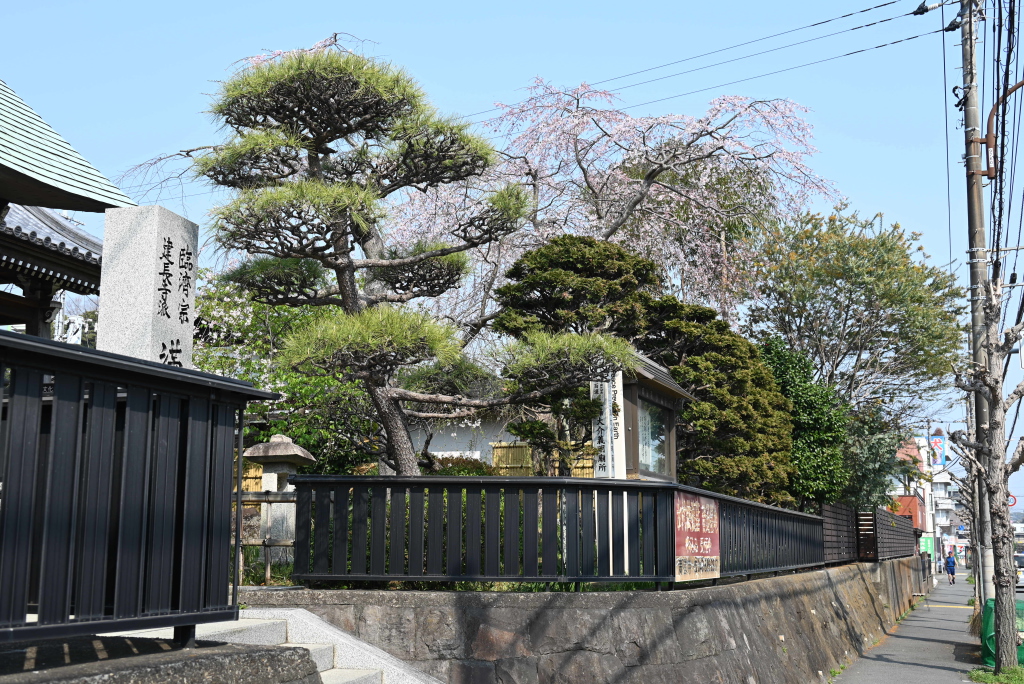
At the foot of a quiet hillside stands Manshoji Temple(満昌寺/Manshōji), framed by a dignified sanmon(山門/temple gate) that seems to guard both memory and time. Beside the gate, in early spring, a single shidare-zakura(しだれ桜/weeping cherry blossom tree) unfurls its branches like threads of silk in the wind. This particular tree is a Gion shidare-zakura(祇園しだれ桜), a distinguished variety cultivated by the famed Kyoto sakura gardener Fujioemon Sano(佐野藤右衛門)—a lineage known as sakura-mori(桜守/caretakers of cherry trees).
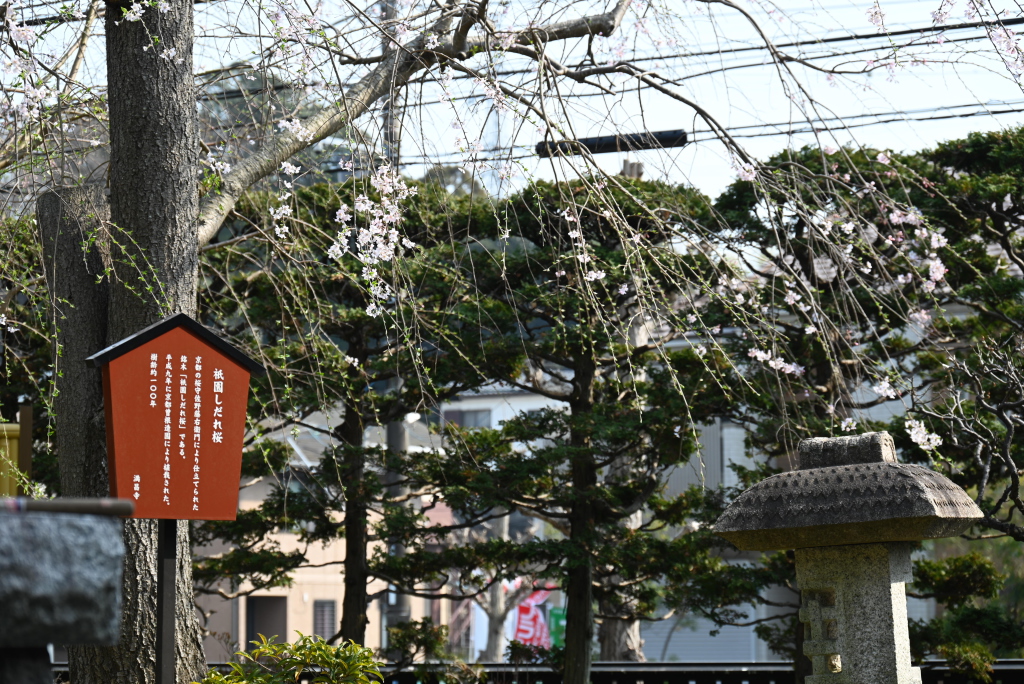
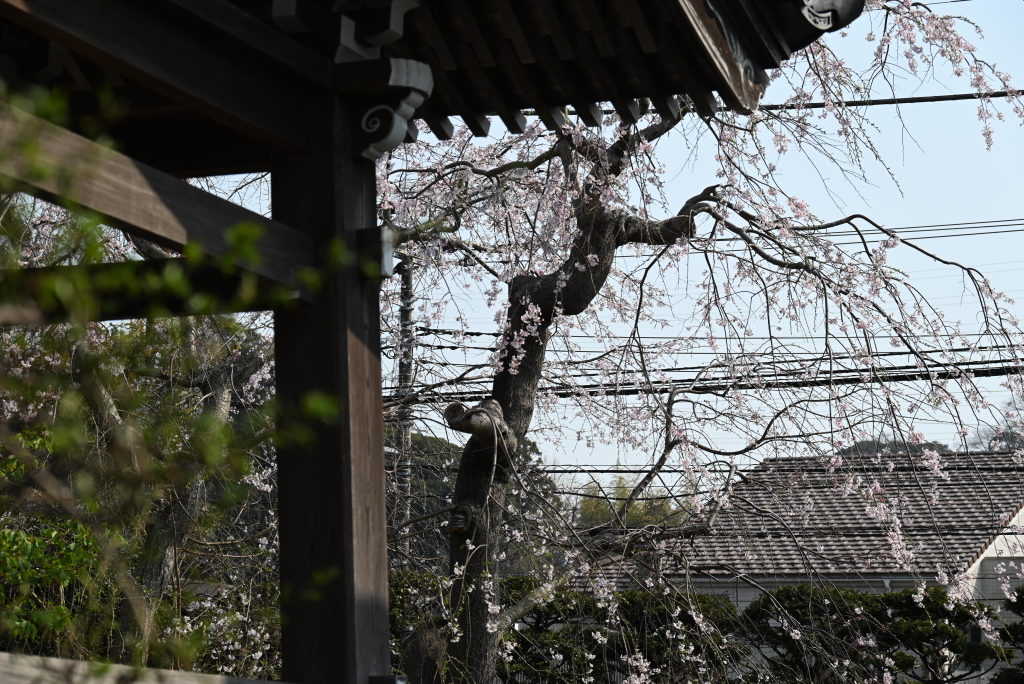
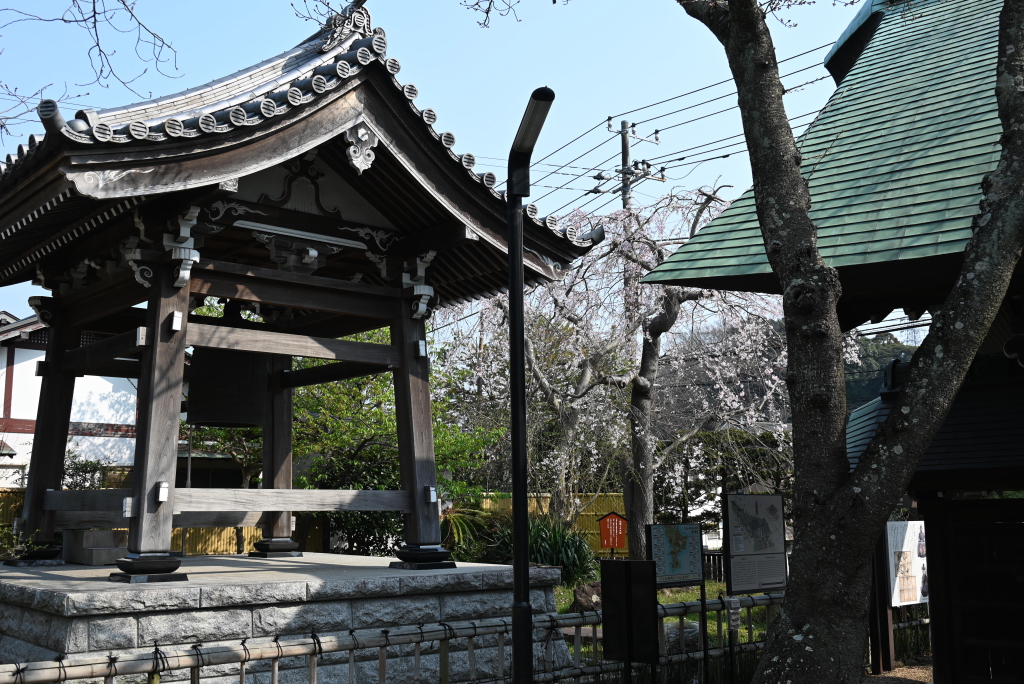
Rather than grand crowds, the temple offers something rarer: stillness. The grounds feature a kare-sansui(枯山水/dry landscape garden), where raked gravel, moss, and stone form a silent conversation with light. For photographers, it is a place to pause—not only to frame, but to listen. The breeze that moves the blossoms feels less like a moment to capture, and more like a memory returning to the present.
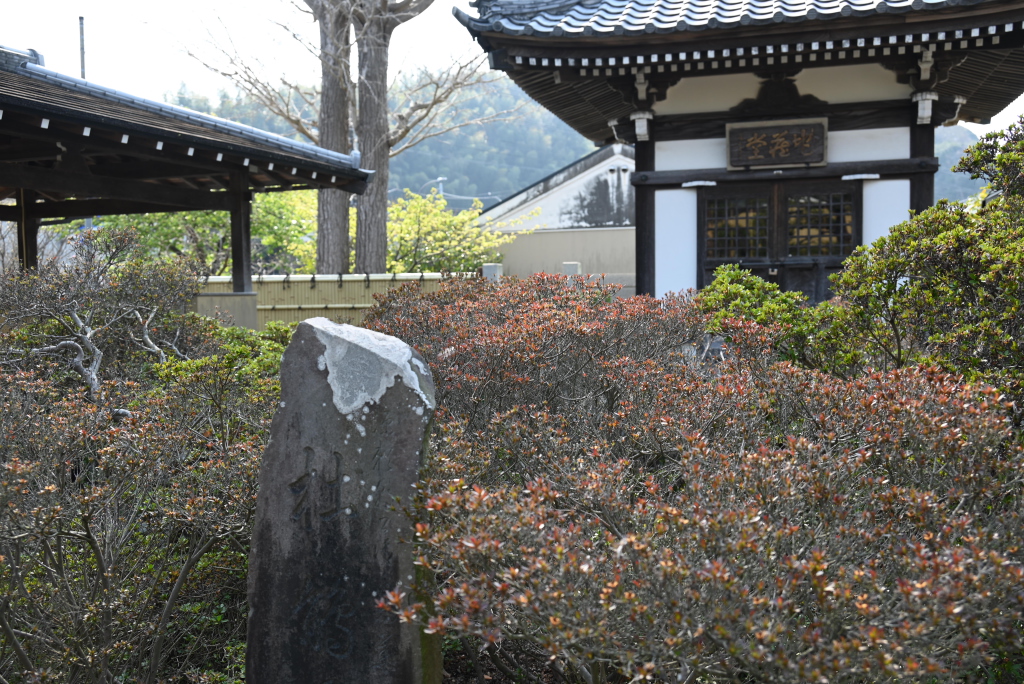
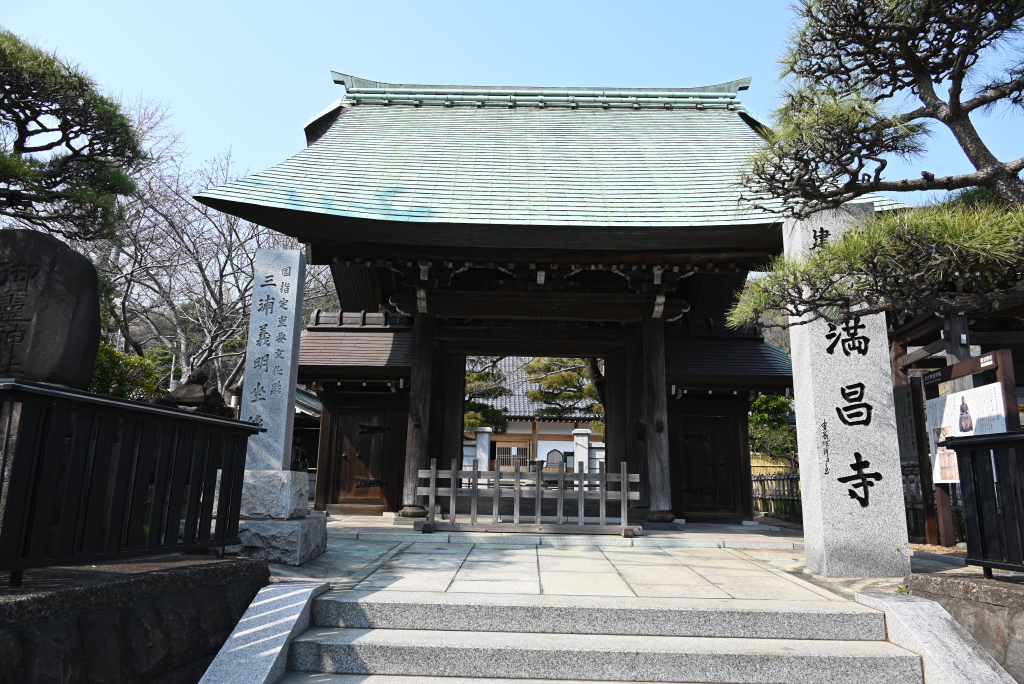
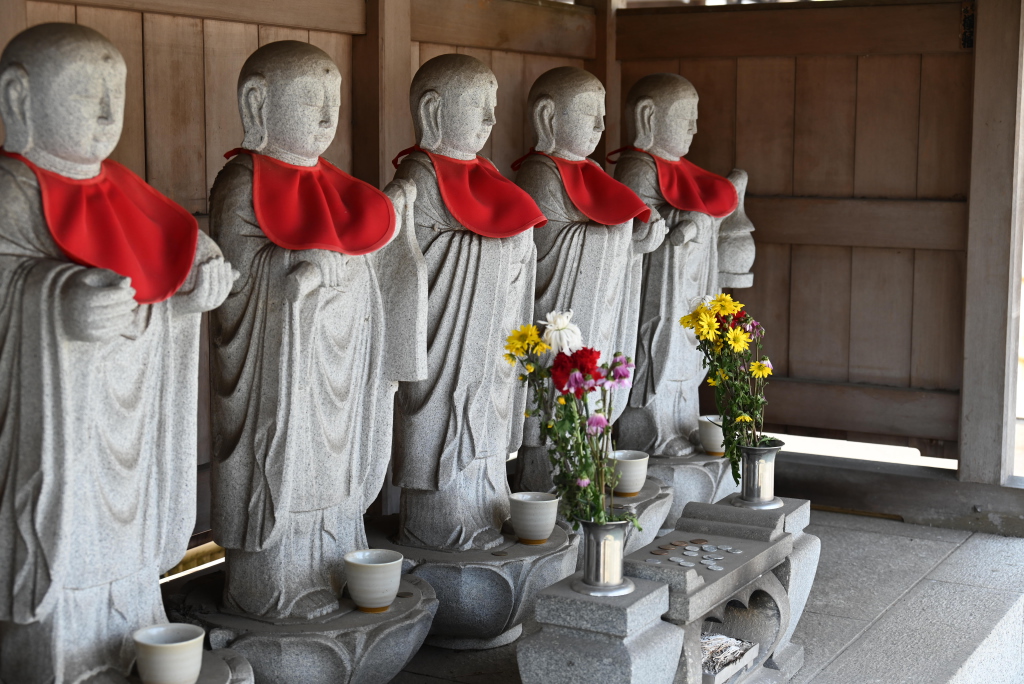
In front of the main hall grows an ancient tsutsuji(ツツジ/azalea) said to have been planted by Minamoto no Yoritomo(源頼朝), the founder of the Kamakura shogunate, when the temple was built in 1197. Local lore claims that if you gently place your head among its branches, it can ease headaches and bring clarity of mind. More than just folklore, it’s a whisper from the past—a gift planted for the future.
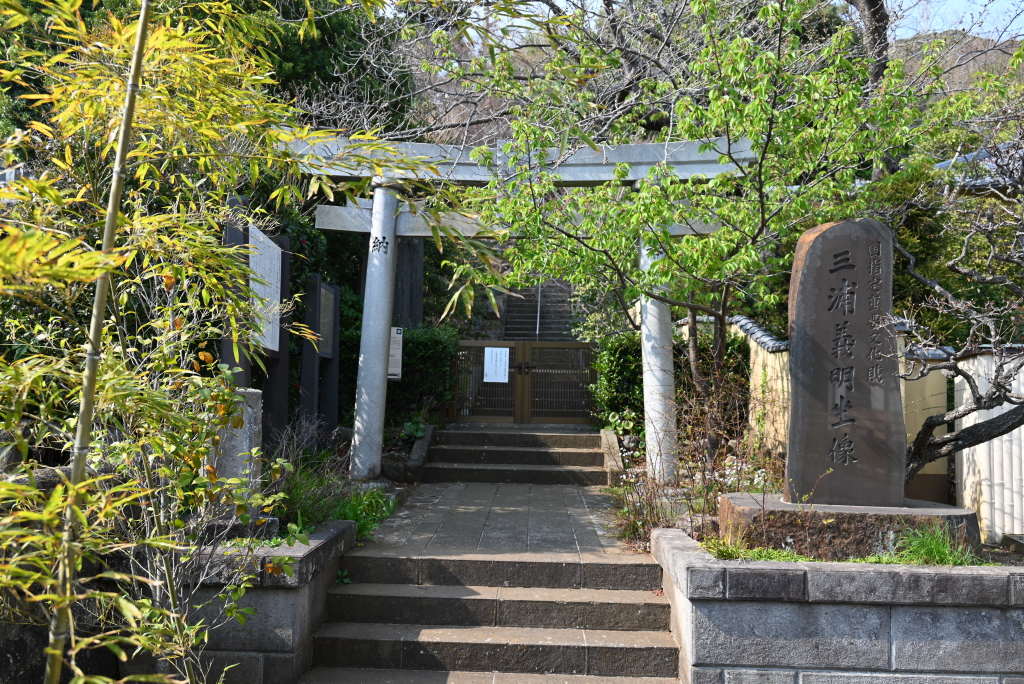
While the temple grounds are freely accessible, many interior areas—including the main hall and treasure room—are not open to the public.
For those interested in viewing the temple’s historical statues, limited access may be available by advance reservation (with a small admission fee). Please refer to the official website for details.
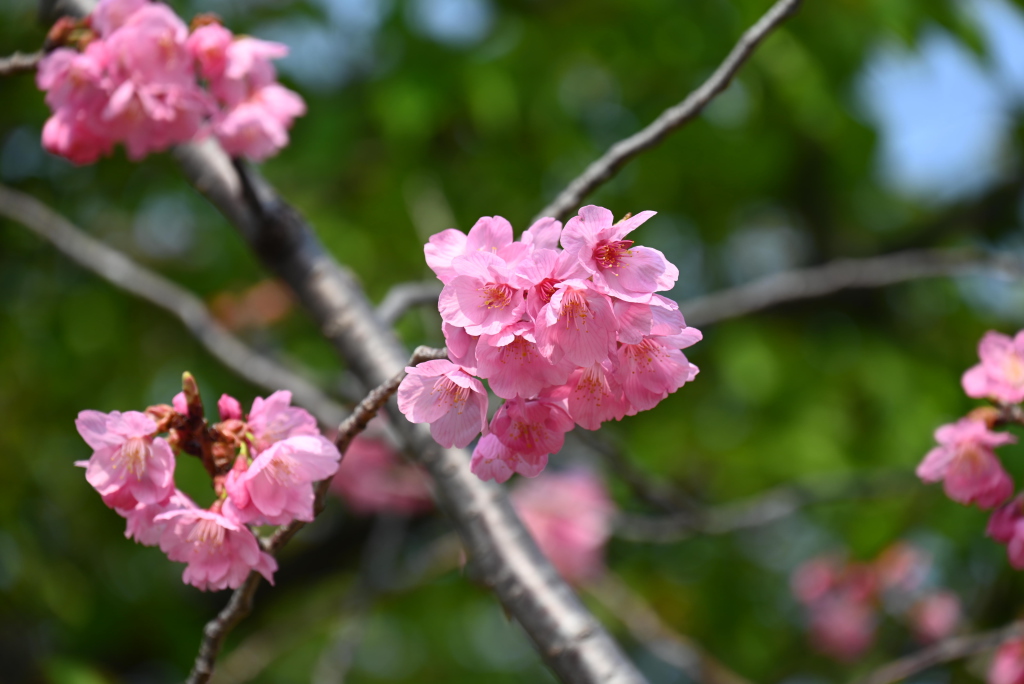

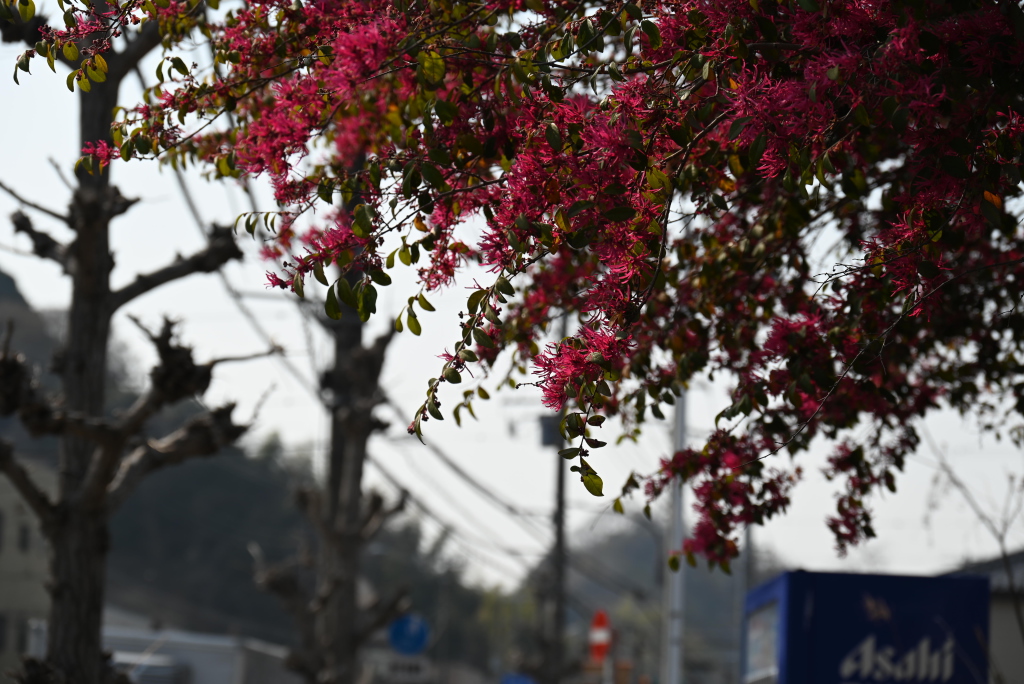
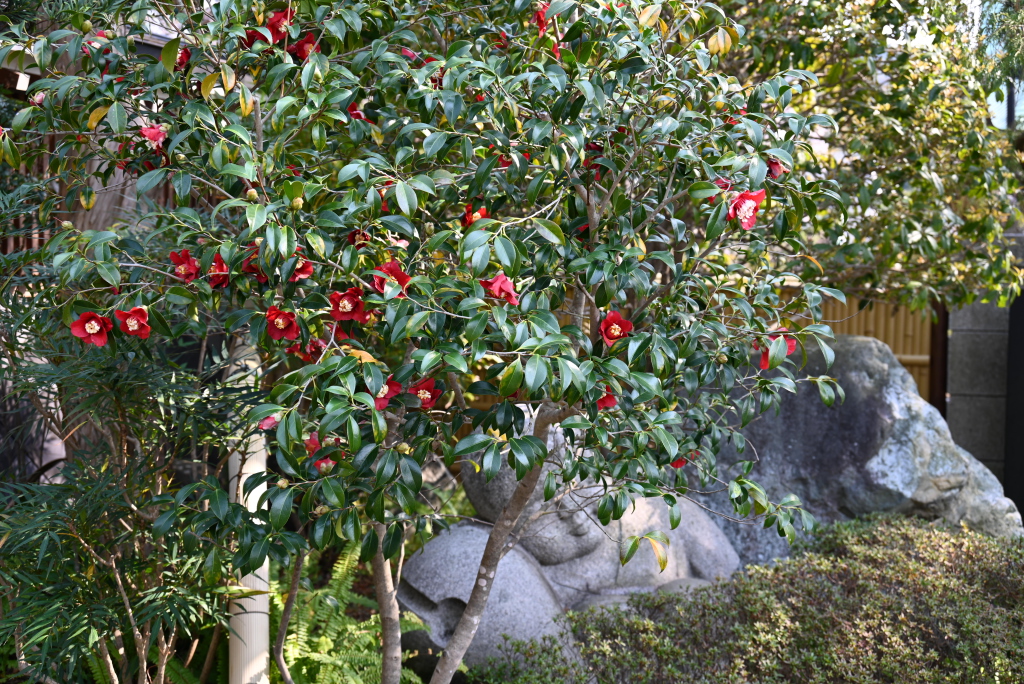
Manshoji Temple is not a destination for tourists chasing spectacle.
It is a place where blossoms bloom with purpose, where gardens speak without words, and where history breathes softly through bark, stone, and silence.
📍 Location: 1-5-10 Oyabe, Yokosuka, Kanagawa
🔗 Official Website: manshoji.com
Hinokitei – A Seasonal Pause in Quiet Elegance
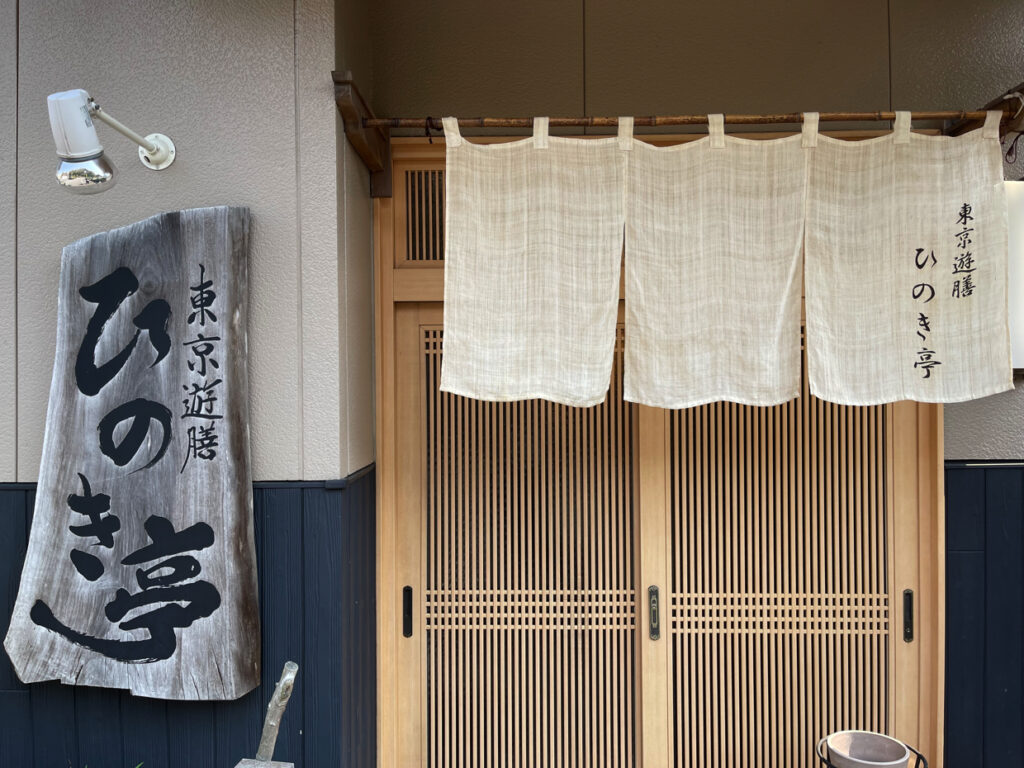
Tucked away in the calm neighborhood of Yamashinadai, Hinokitei is a beloved Japanese restaurant known for its focus on seasonal ingredients and honest flavors. Just a short drive from Manshoji Temple, it offers a peaceful setting to enjoy a quiet, satisfying lunch.

The featured lunch set, called Yūzen, lets you choose two main dishes from options like sashimi, tempura, simmered fish, grilled fish, pork kakuni (braised pork belly), or beef steak. It also includes two daily side dishes, miso soup, pickles, and freshly cooked rice.

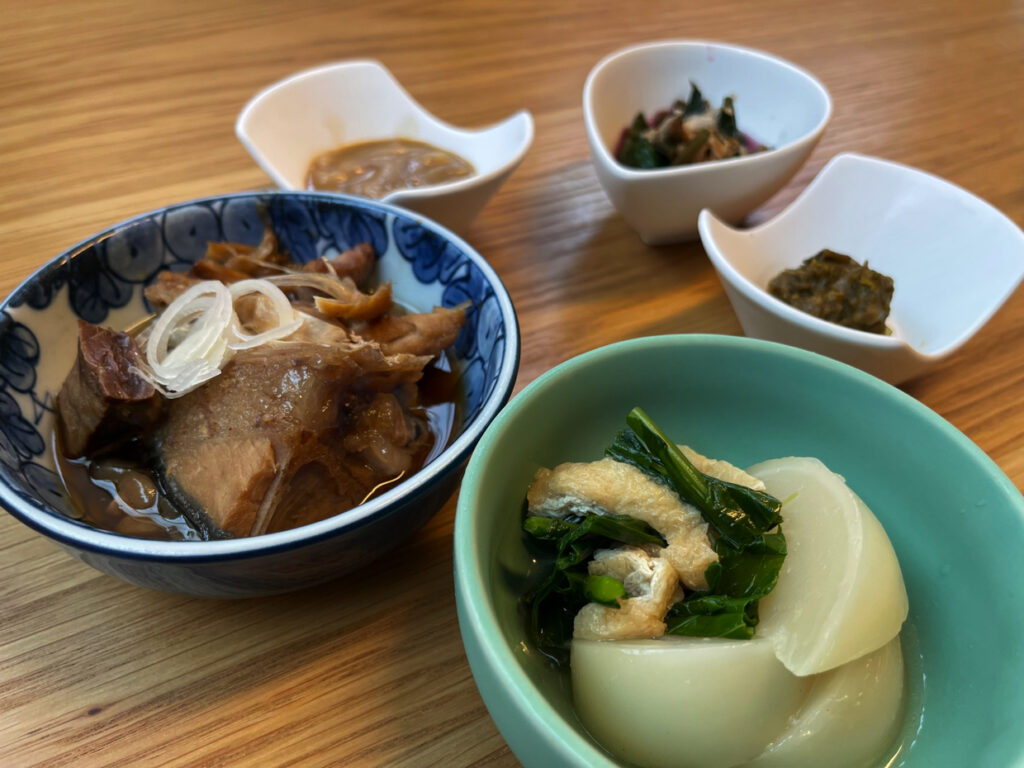
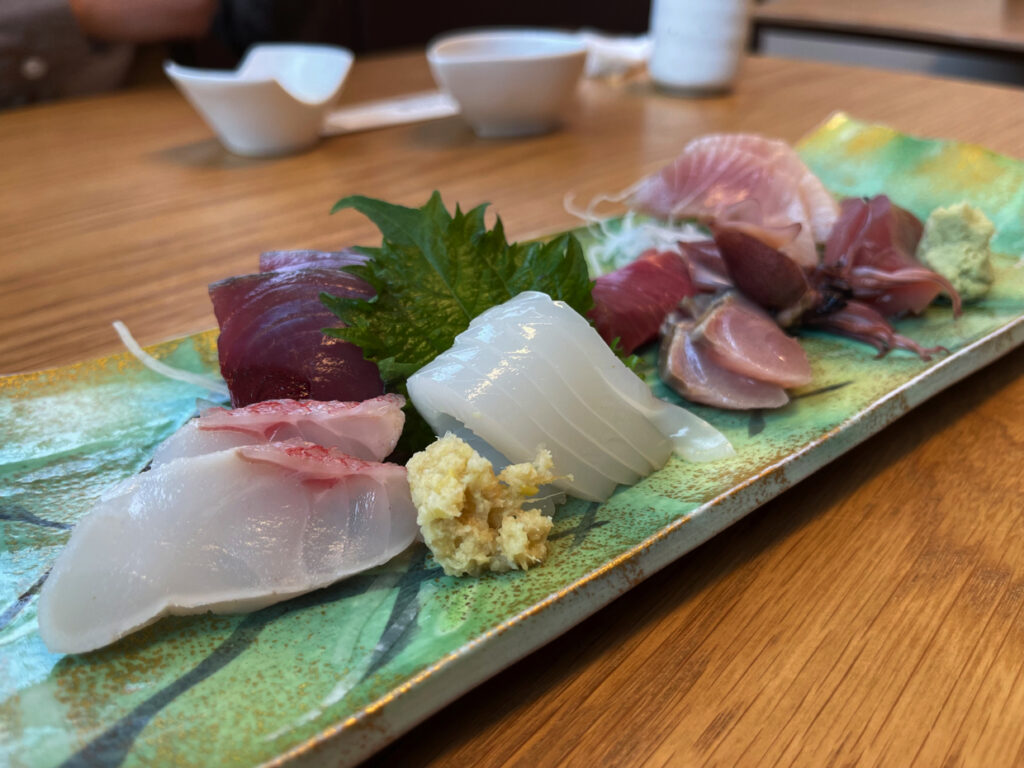


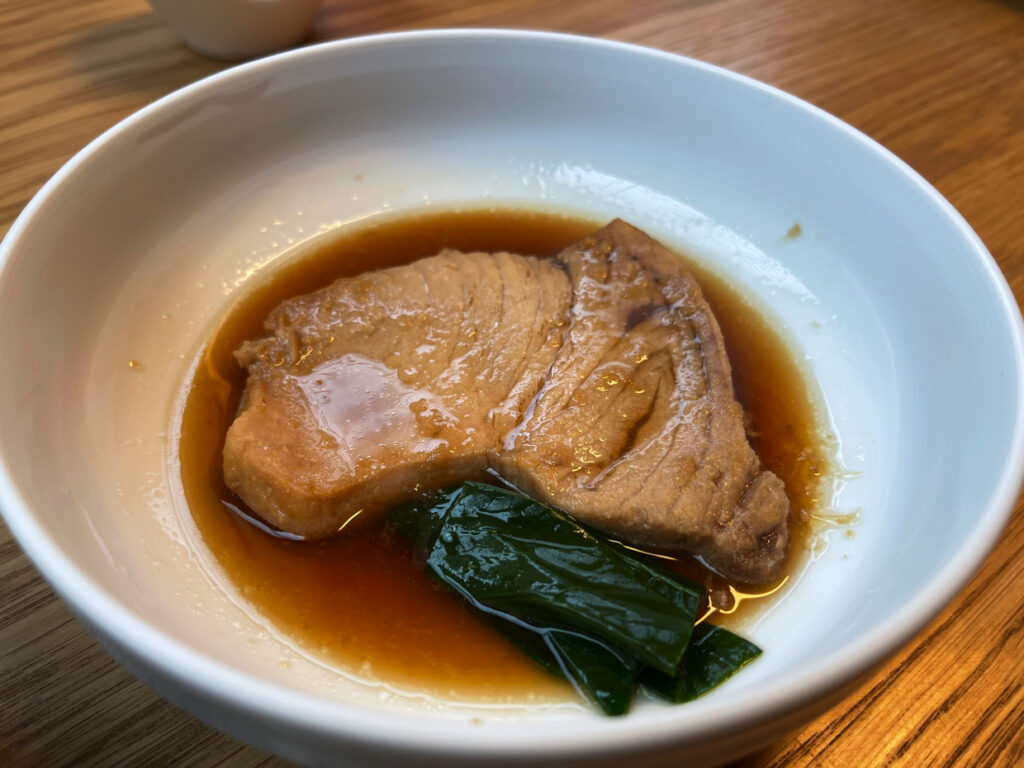

Each plate is carefully arranged—not just beautiful, but thoughtfully balanced. It’s a meal that feels both satisfying and gently refined.
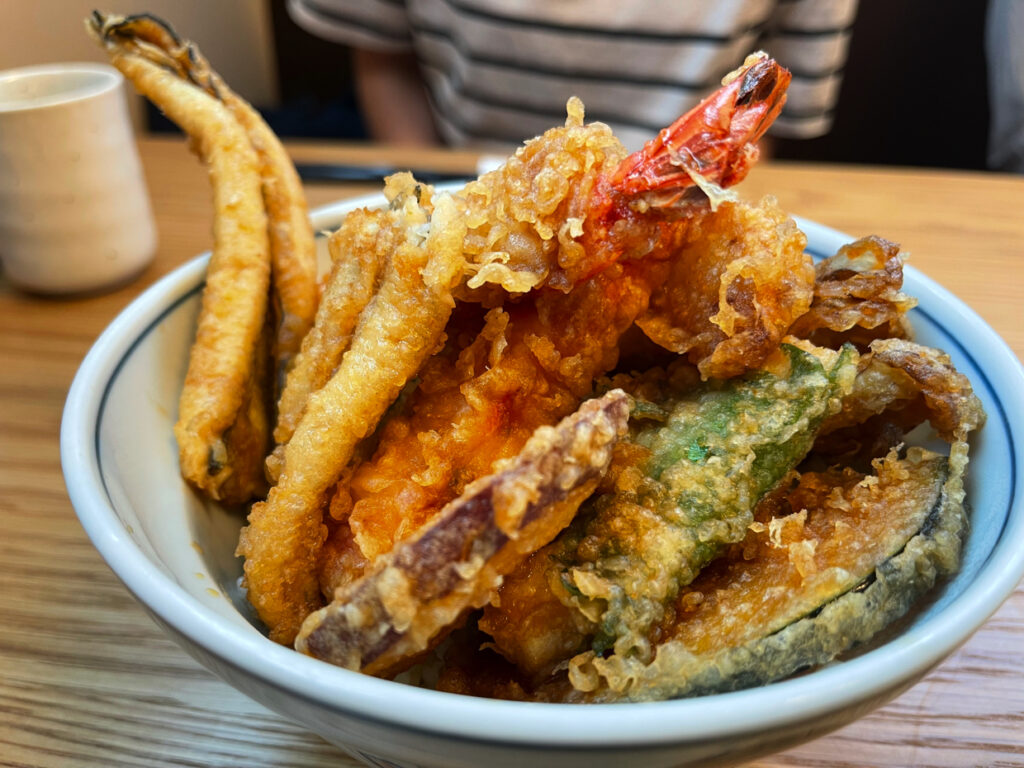
Other lunch menu options include tendon (tempura over rice) and unagi don (grilled eel over rice), both popular with locals.
The special tendon includes domestic anago (conger eel), prepared in-house and fried in a blend of light sesame and cottonseed oils. This creates a crisp texture with a rich, nutty aroma that isn’t too heavy.
Seafood is sourced from nearby Miura Peninsula ports such as Hashirimizu, Kaneda, and Nagai, while vegetables come from local farms. In spring, the owner even forages mountain vegetables himself.
The rice is pesticide-free Koshihikari, grown by a trusted farm in Futtsu and polished in-house just before cooking. Everything, including cooking and drinking water, is prepared using alkaline ionized water.
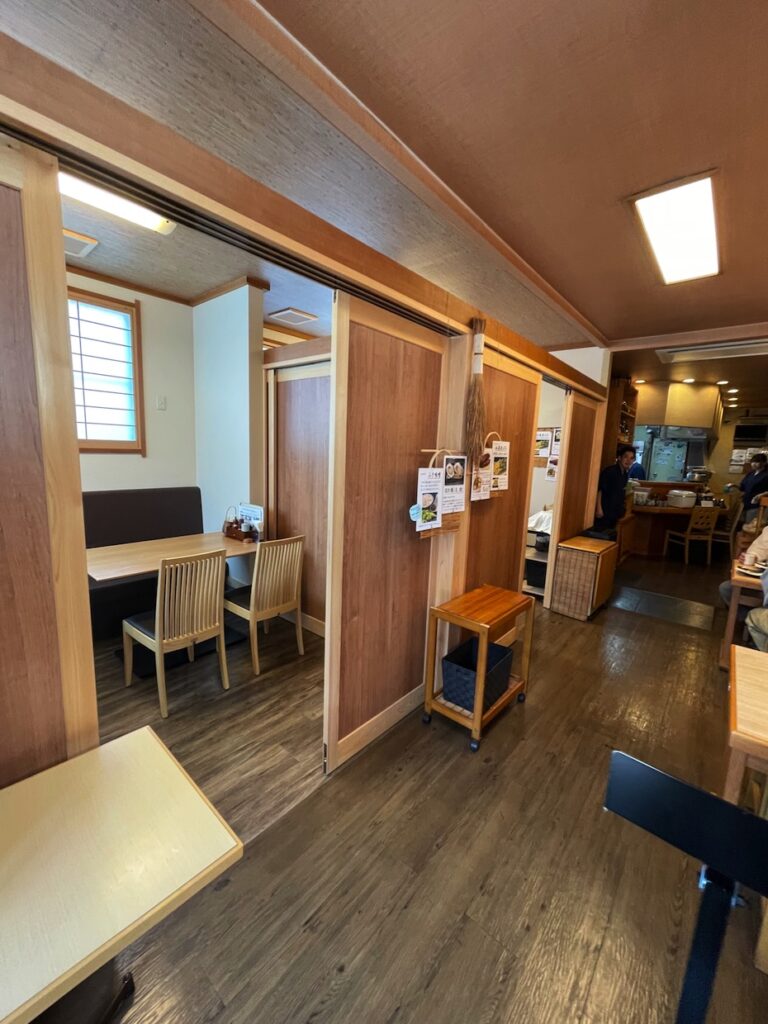
The interior offers a mix of table seating, zashiki (traditional Japanese floor seating), and koagari (raised tatami platforms), making it a comfortable stop for all types of travelers.
Lunch hours can get busy, especially on weekends when reserved courses are popular, so coming early or a bit late is recommended. Calling ahead is also a good idea if you’re planning to visit on a weekend.
Hinokitei is a great stop for a well-priced, carefully prepared Japanese meal featuring local fish and seasonal vegetables.
If you’re looking to enjoy traditional flavors in a peaceful, local setting, Hinokitei is a spot you won’t want to miss.
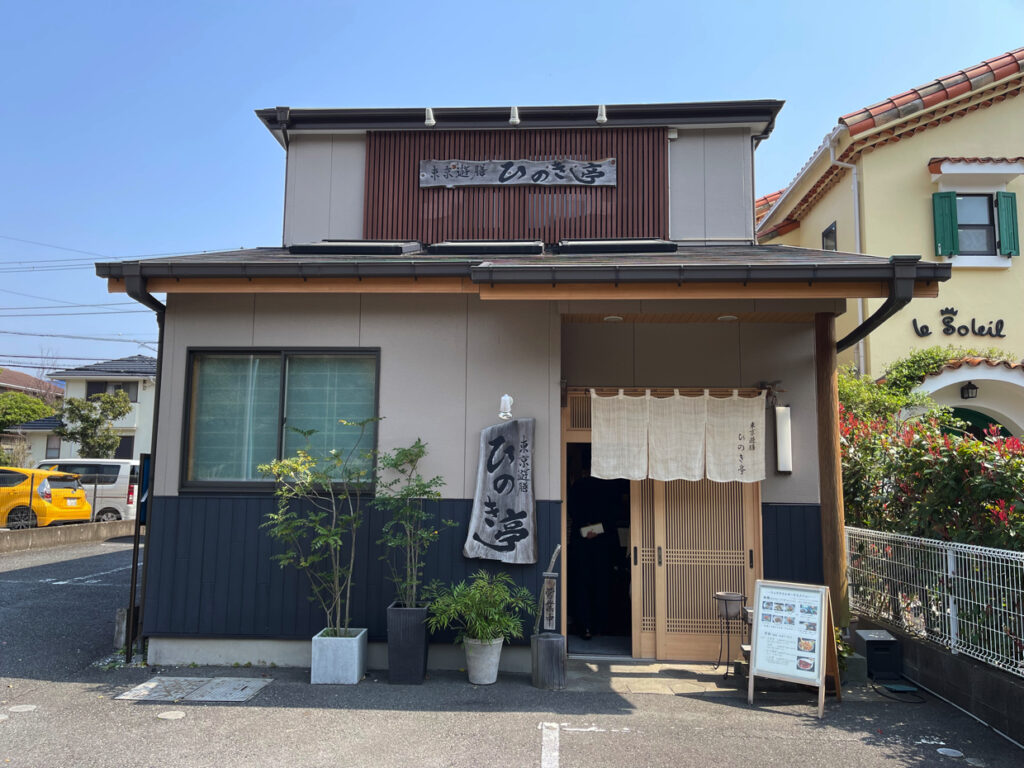
Access from Manshoji Temple
By car: approx. 7 minutes
By bicycle: approx. 13 minutes
On foot: approx. 25 minutes
📍 View on Google Maps
🕰 Open: Tue, Wed, Fri–Sun (Lunch 11:30–14:30) / Fri & Sat dinner also available
💳 Credit cards accepted / Non-smoking (outdoor smoking area available)
🌐 Official Website
Tsuken Street (通研通り)& YRP — Petals on the Move
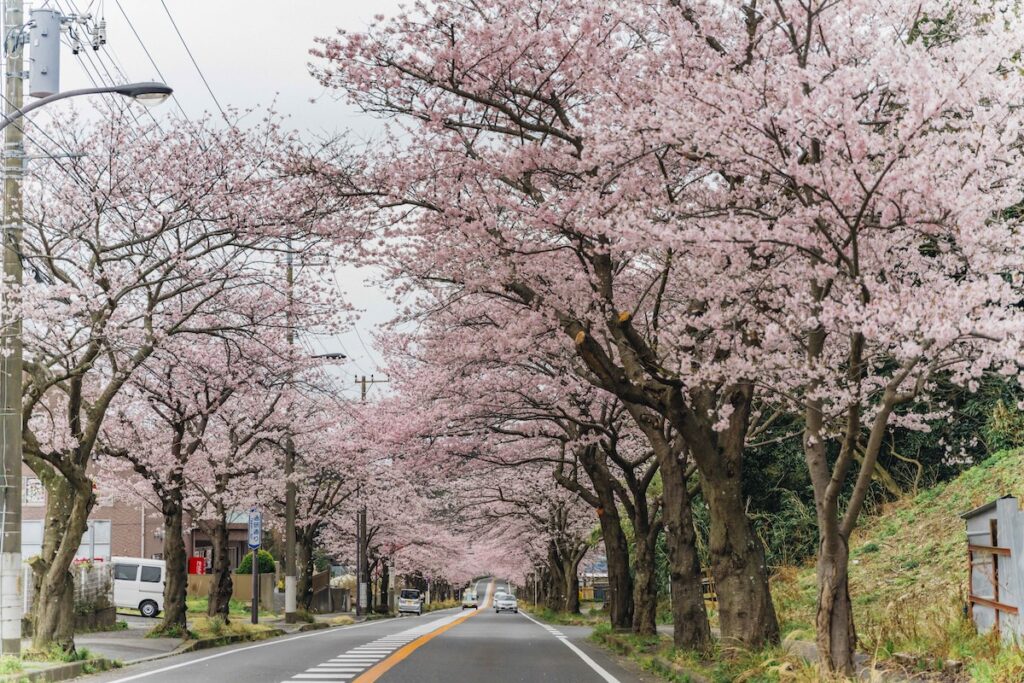
After leaving Manshoji Temple and heading toward Shomyoji, what seemed like a simple drive became an unexpected highlight of spring. Tsuken Street(通研通り), with its quiet slope lined by rows of Somei Yoshino cherry trees (a pale pink variety most commonly seen across Japan), is not a major destination—but that’s exactly why it stays with you.
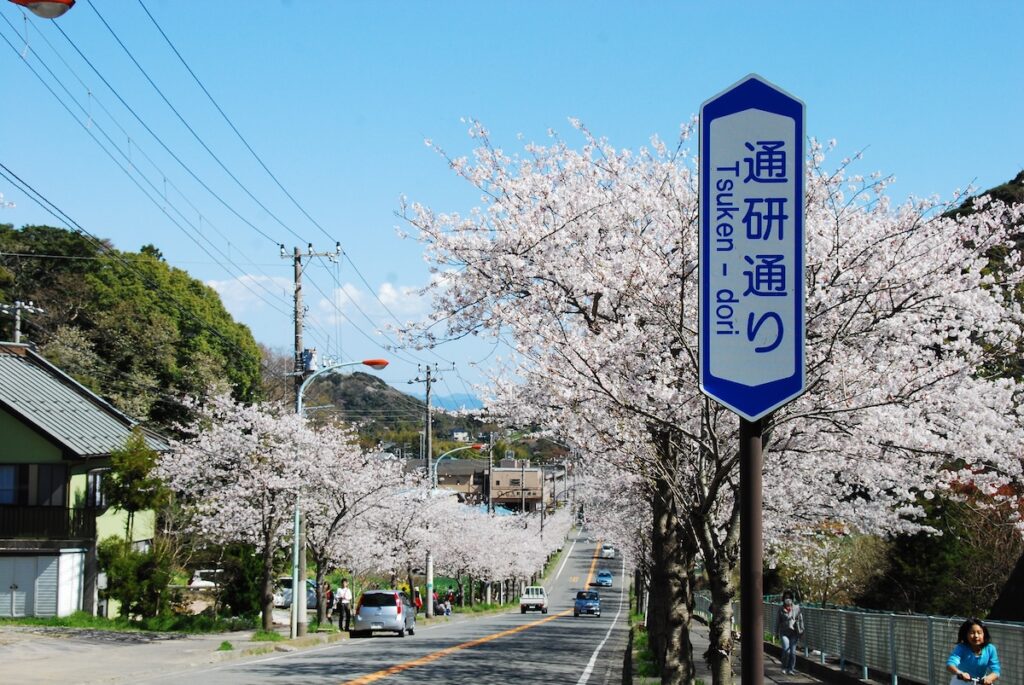
The road stretches from the NTT Communication Research Center toward Nagasawa Junior High, creating a soft tunnel of blossoms in peak season. Even through the car window, it’s a cinematic view. But if you have the time, I recommend stopping near YRP Center, where coin parking is available. Walking the street at your own pace lets you feel the rhythm of petals in the wind. Your camera hand moves almost without thinking, guided by light and breeze.
Farther along, the area around Hikari no Oka (Yokosuka Research Park) and near Iwato Junior High reveals another layer of beauty—cherry trees blooming beside fences, leaning gently into the hillside. These aren’t planned displays. They’re fragments of beauty growing quietly within daily life.
Sometimes, you find yourself pulling over, or stopping mid-step—drawn by a flicker of light or the angle of a branch. And it’s often these fleeting, unplanned scenes that linger longest in memory.
📍 Location: Along Nagasawa, near the NTT Tsuken Research Center, Yokosuka
Hikari no Oka (YRP) & Iwato Junior High School Area
📍 Location: Around Hikari no Oka and Iwato, Yokosuka, Kanagawa
Shomyoji Temple (Nobi) (称名寺/Shōmyōji)– Stillness Beneath the Blossoms
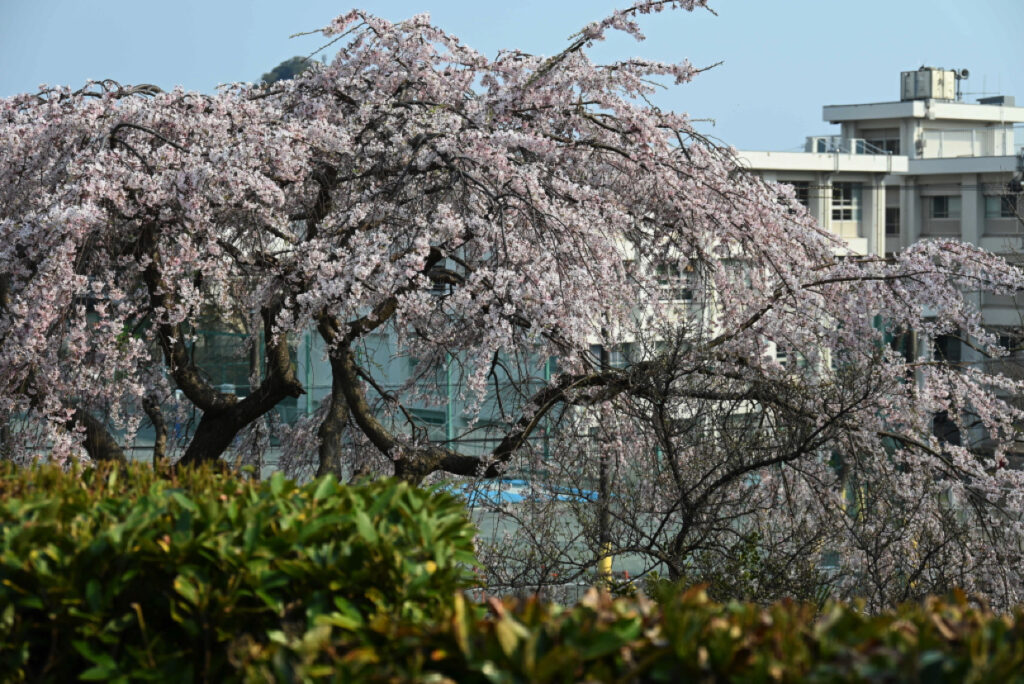
About a ten-minute walk from YRP Nobi Station, Shomyoji Temple(称名寺/Shōmyōji) quietly rests among the residential streets of Yokosuka. Modest in scale and humble in appearance, it offers something rare in spring—tranquility that feels untouched, even as cherry blossoms begin to bloom.
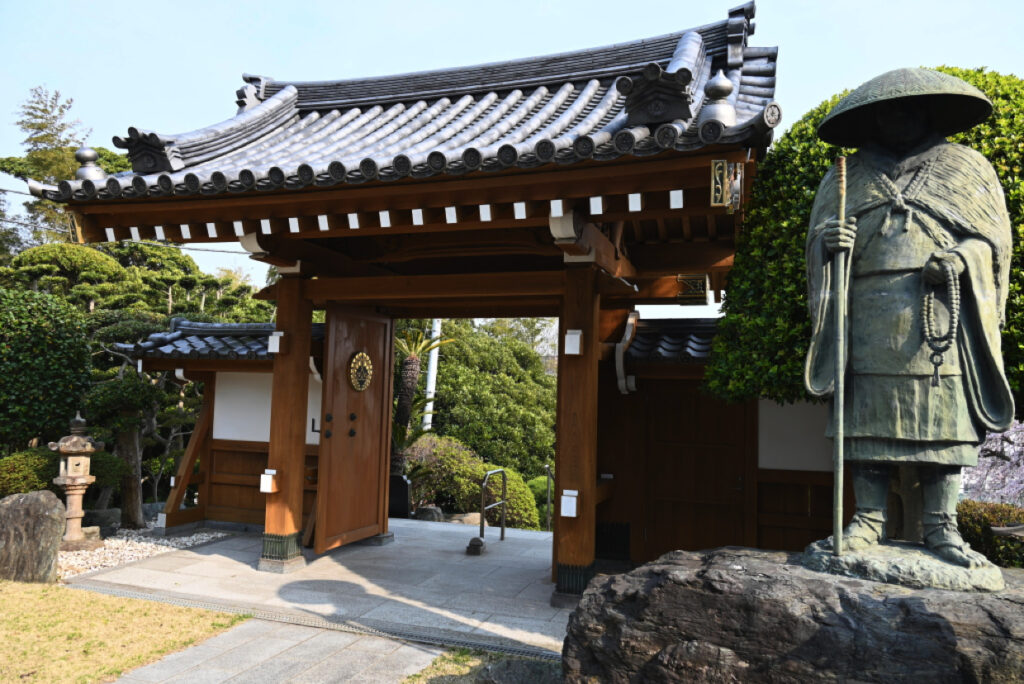
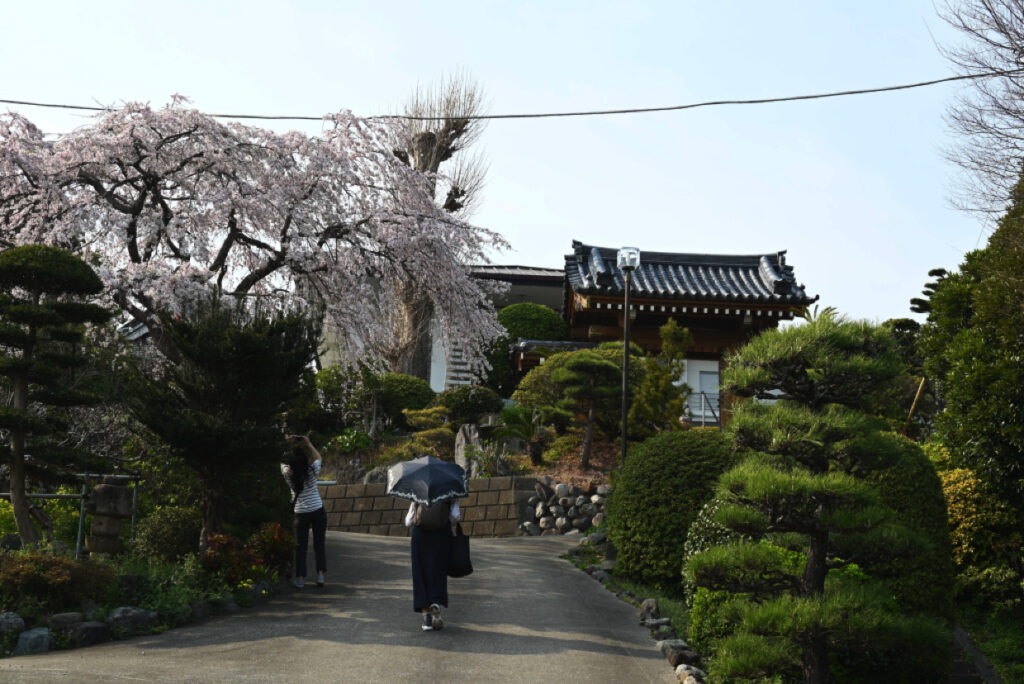
What draws visitors here is the elegant shidare-zakura(しだれ桜/weeping cherry blossom tree) beside the temple’s modest sanmon(山門/temple gate). With its graceful form and wide-reaching branches, the tree often blooms slightly earlier than the surrounding Somei Yoshino(ソメイヨシノ/Somei Yoshino cherry trees), creating a gentle contrast with the surrounding trees. Underneath its blossoms, everything feels quietly suspended.
The temple grounds are compact but lovingly tended. Seasonal plants and garden trees offer soft accents throughout the year. For photographers, it’s a place where you don’t need to search for the perfect shot—it quietly reveals itself when you’re ready. With a bit of framing, the stillness becomes the subject, and what you capture feels more like a breath—fleeting, quiet, and alive—than a photograph.
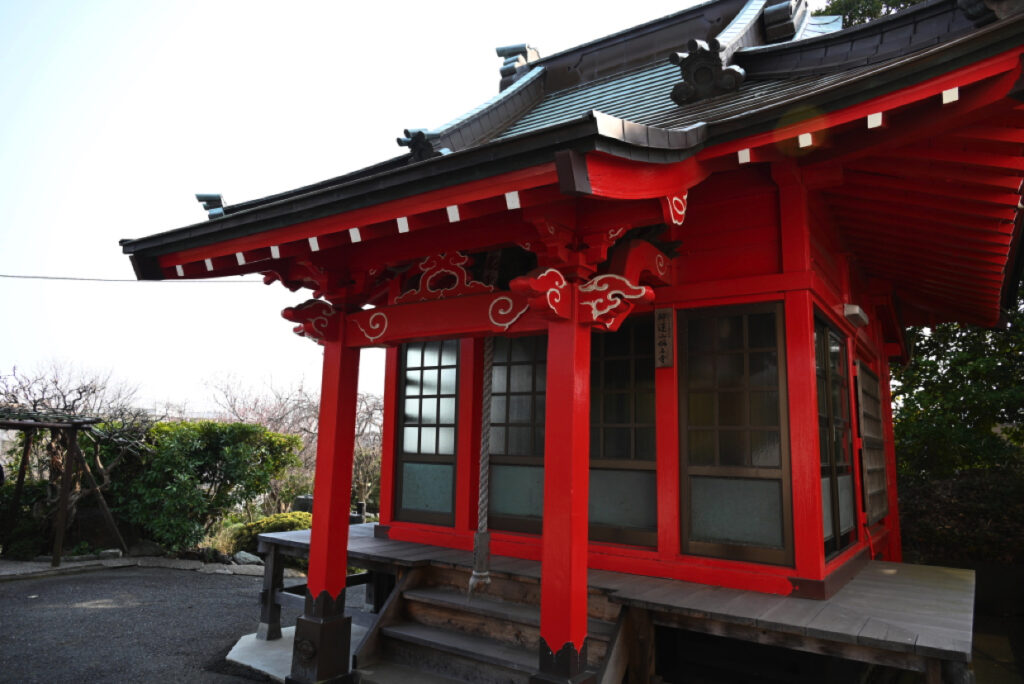
Shomyoji is also the eleventh stop on the Miura 33 Kannon Pilgrimage(三浦三十三観音霊場). In its Kannon Hall(観音堂) rests a statue of Sho Kannon(聖観音), a figure quietly venerated by locals for generations. Though the hall remains closed to the public, its presence is felt—woven gently into the air, like the soft fall of petals in spring.
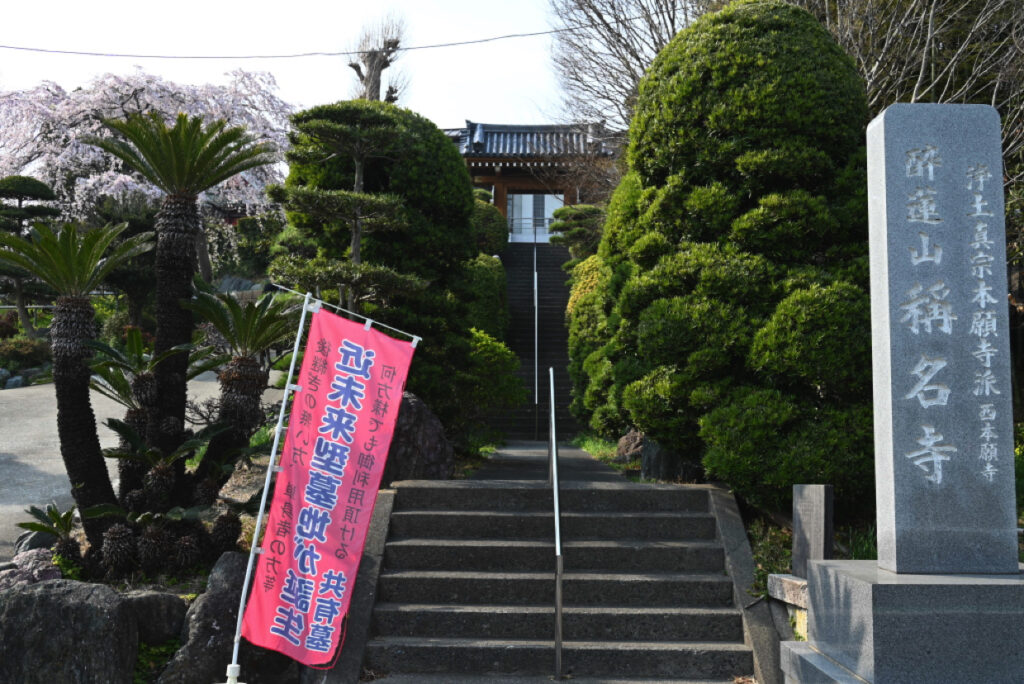
Located just a short distance from the cherry-lined Tsuken Street, Shomyoji invites you to pause—to trade spectacle for stillness, and discover the quiet resonance of a blossom that needs no audience to be beautiful.
📍 Location: 1-32-15 Nobii, Yokosuka, Kanagawa
Togakuji Temple(等覚寺/Tōgakuji) – Stillness Framed by Light
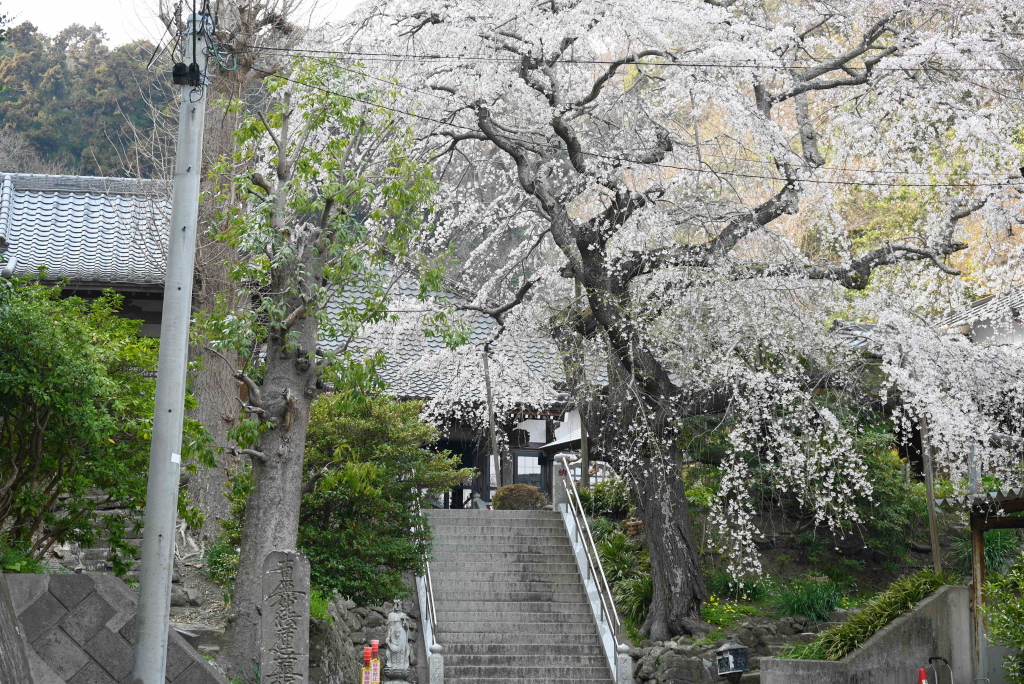
Tucked into the quiet residential streets of Kumura(久村), Togakuji Temple(等覚寺/Tōgakuji) feels like a space held gently in silence. When I arrived, what struck me first was the absence of noise. There were no cars, no chatter—just the rustle of branches, the sound of birdsong. It felt less like silence, and more like a different kind of music.
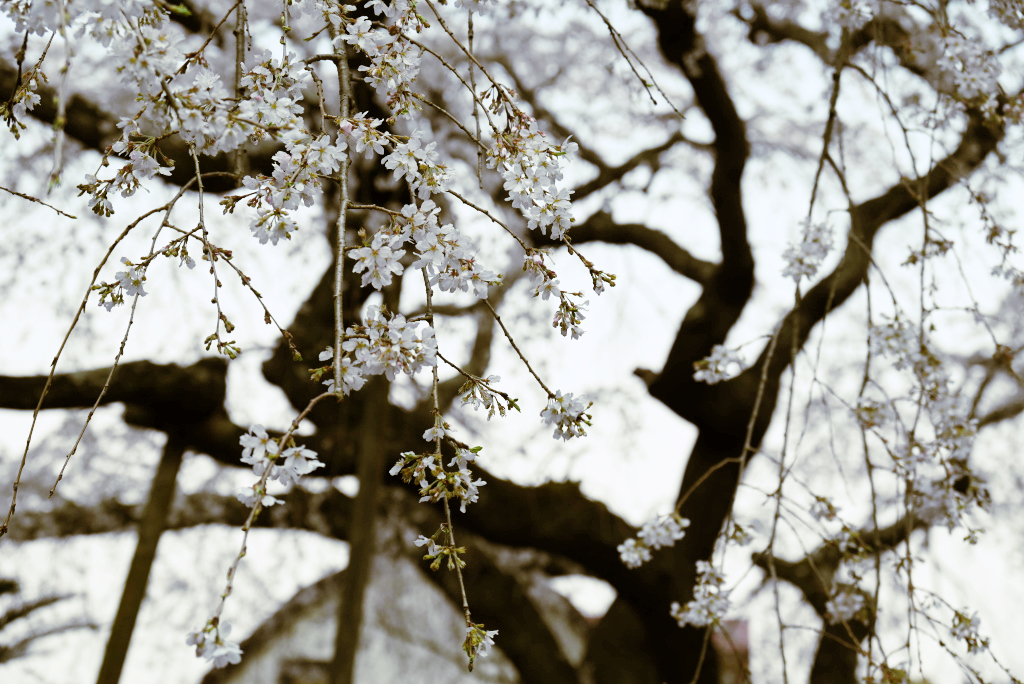
Beside the temple’s stone steps stands a single shidare-zakura(しだれ桜/weeping cherry blossom tree) over a hundred years old. It was planted in the early Taishō era(大正時代/1912–1926) to mark the birth of a local priest, and its branches now sway with quiet dignity. The tree doesn’t overwhelm—it lingers. It doesn’t demand attention, but once noticed, it’s hard to forget.
On the temple grounds, light and shadow shift gently with time. A small change in angle, a quiet step to the side, and suddenly the whole frame transforms. For a photographer, this subtle dialogue with the environment is deeply rewarding—moments when stillness becomes the story.

Next to the main hall stands the Kannon Hall(観音堂/hall dedicated to Kannon), home to a group of wooden statues from the late Heian period. Among them are a Senju Kannon(千手観音/thousand-armed bodhisattva of compassion) and a pair of Kongōrikishi(金剛力士/guardian statues). Though damaged with age, they endure—silent witnesses to centuries past. These statues are not for photographing, but for simply standing before them—in stillness, without needing to capture.
Togakuji is not a grand temple, and it doesn’t ask for attention. But it welcomes those who arrive quietly—with a camera, perhaps, or with open eyes. It’s a place where even the time before the shutter clicks feels sacred.
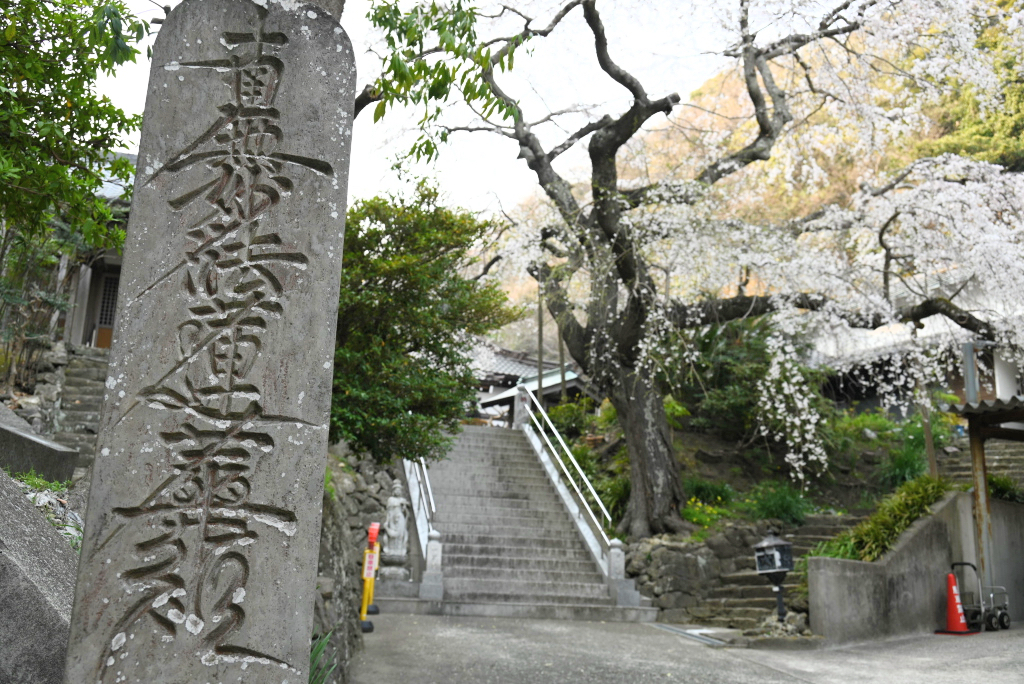
📍 Location: 479 Kumura, Yokosuka, Kanagawa
🔗 Official Website: temple.nichiren.or.jp/0061063-tougakuji
Yokosuka Port Market – A Flavorful Farewell by the Sea
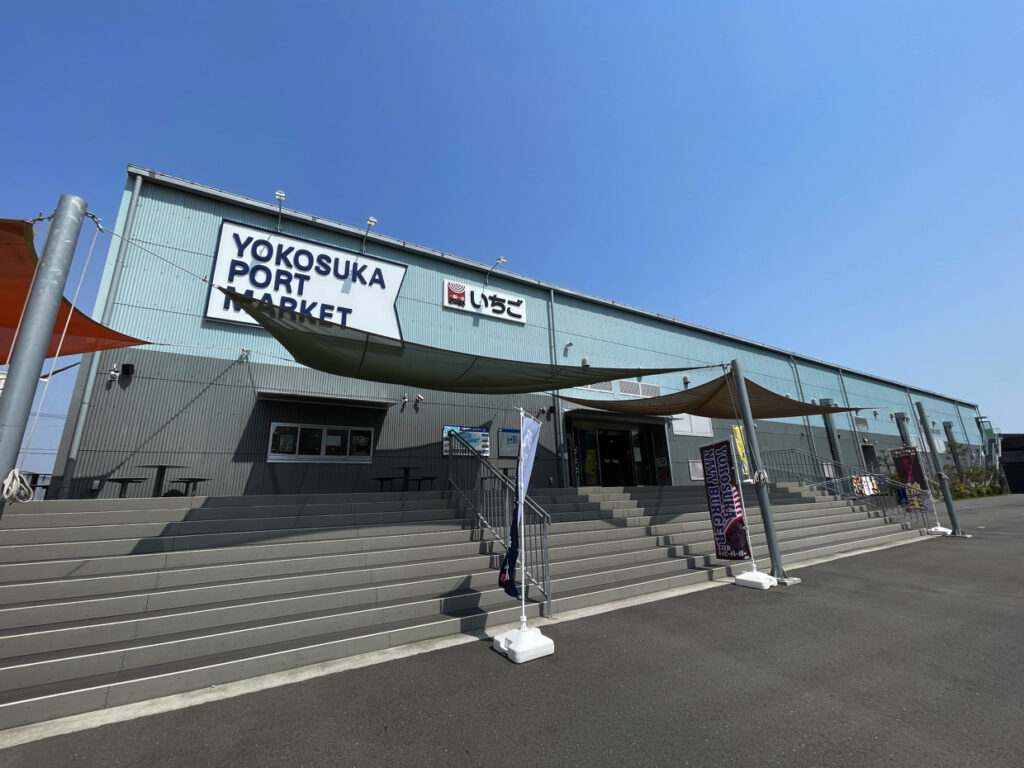
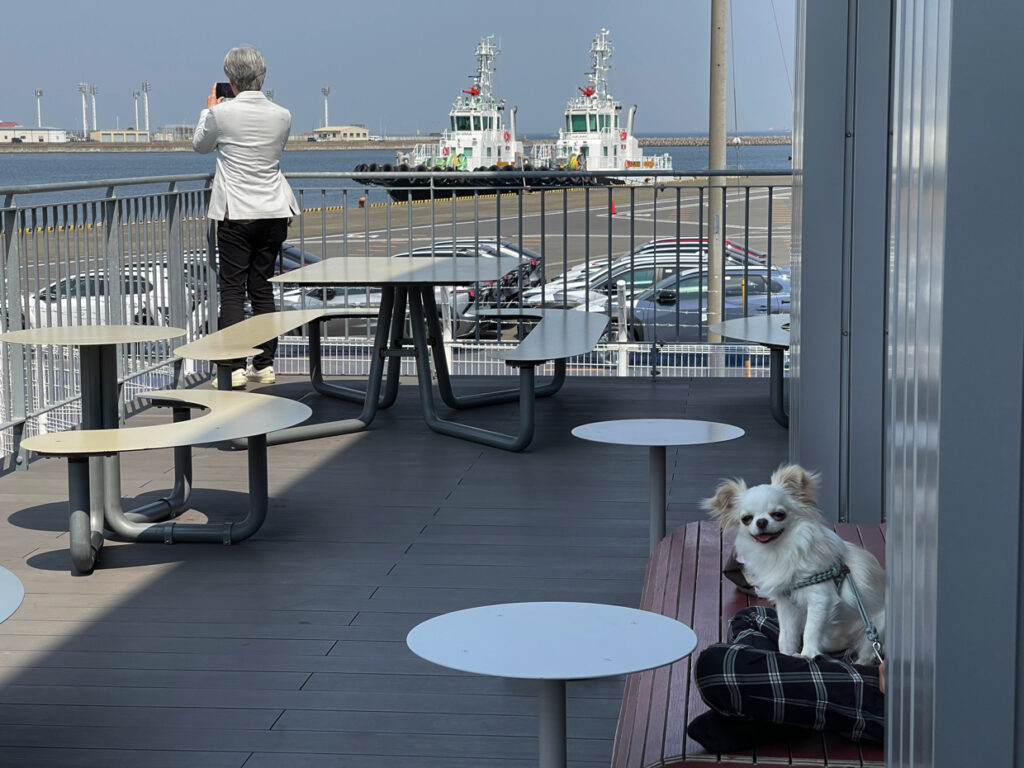
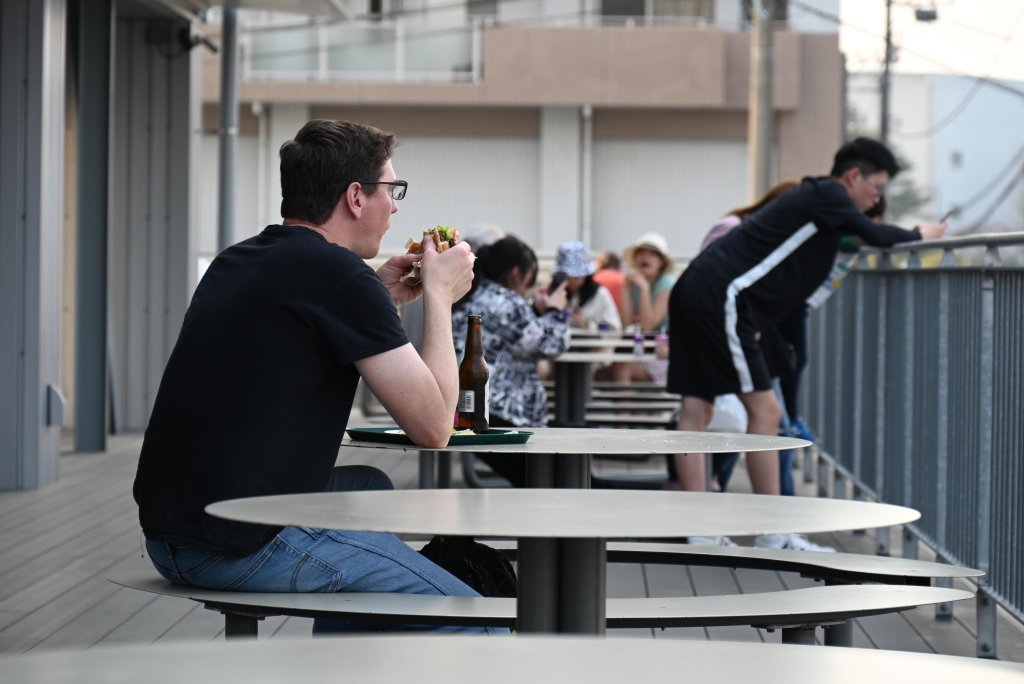
As the day winds down, there’s one more place to savor the spirit of Yokosuka—Yokosuka Port Market, a lively stop near the bay where local flavors and casual charm come together.
This waterfront market brings together fresh produce, seafood, craft drinks, sweets, and local specialties. Whether you’re after a hearty bite or a final treat before heading home, it’s the perfect stop to wrap up your journey.
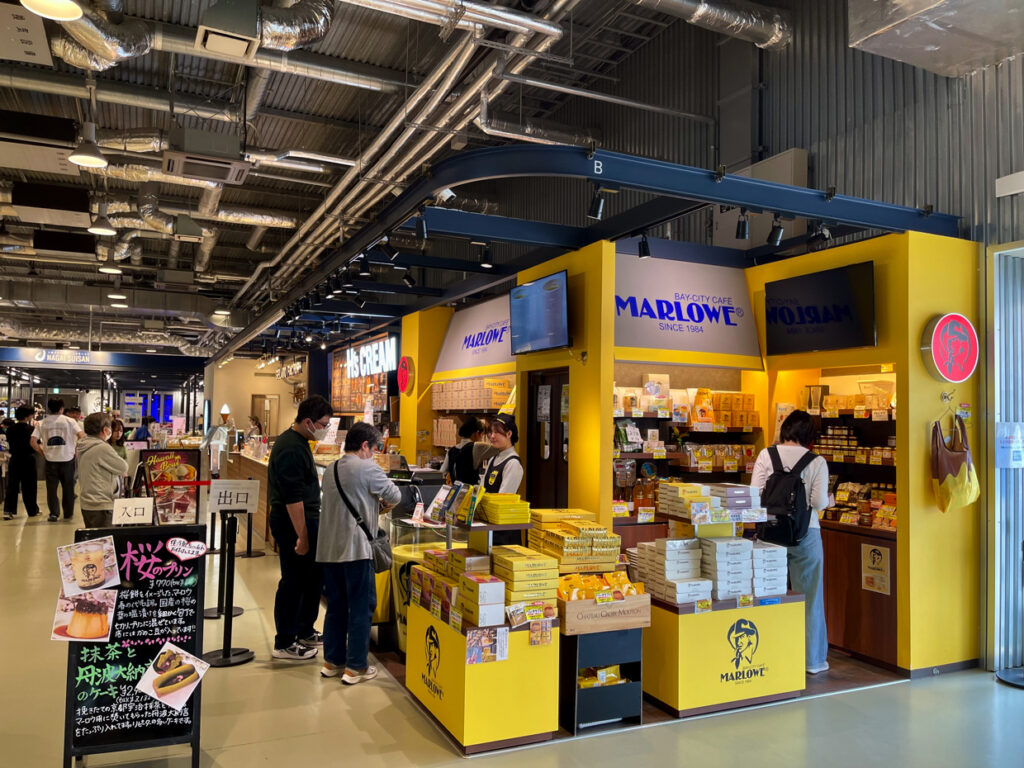
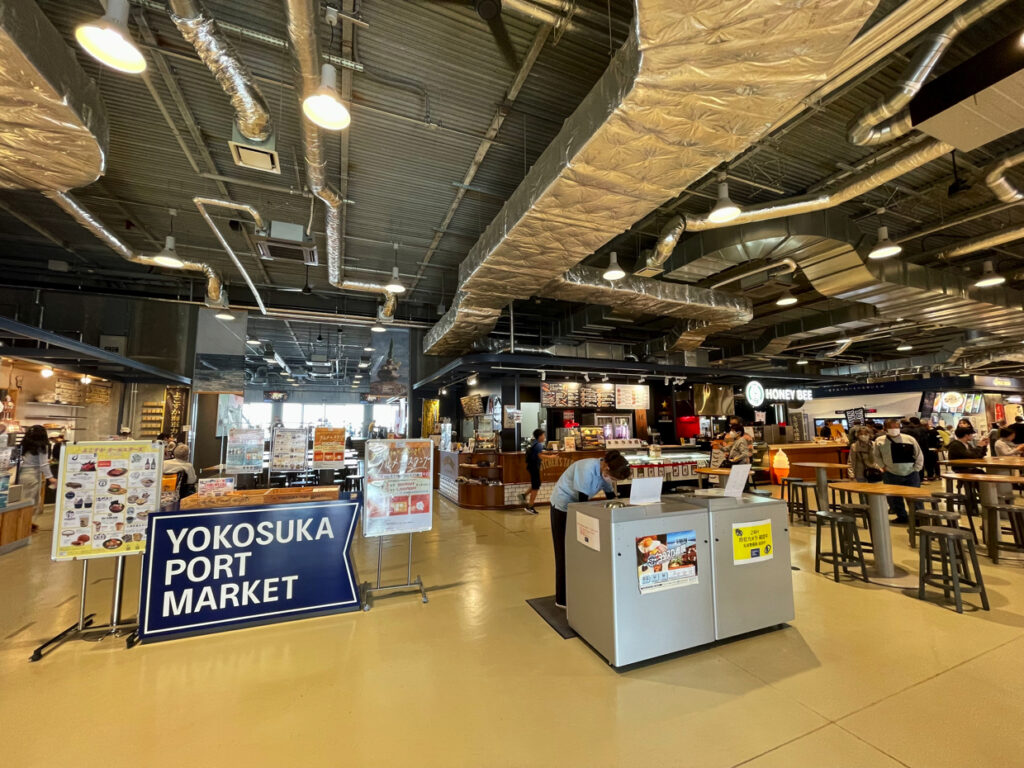
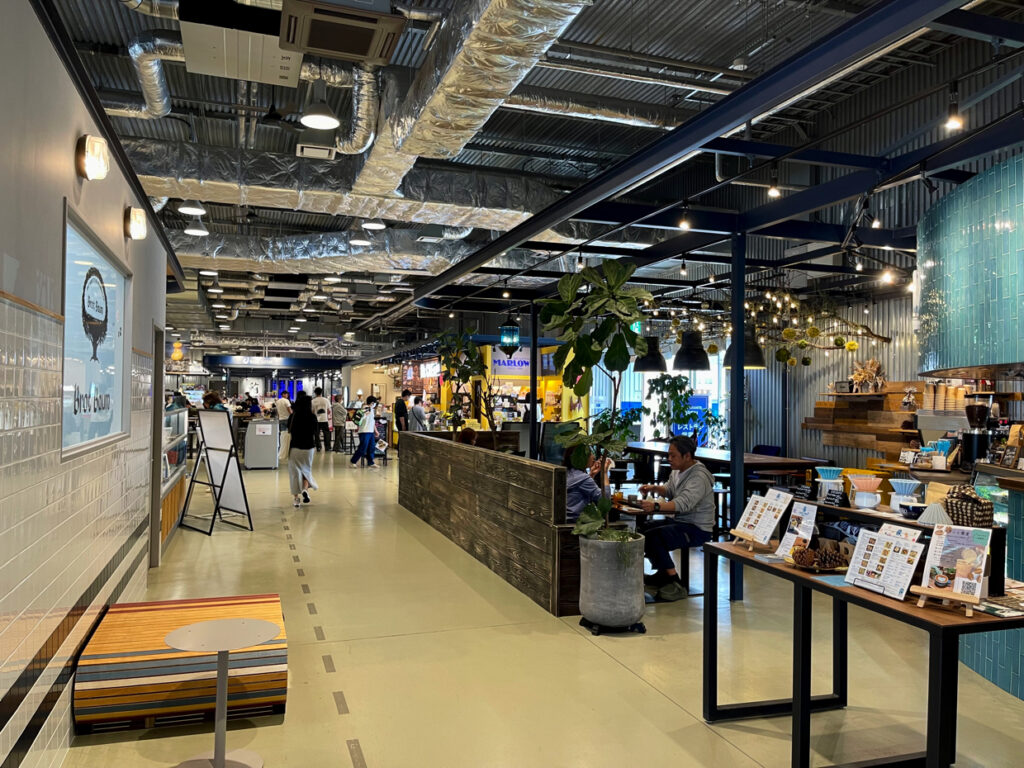
You’ll also find bakeries, deli shops, cafes, and more scattered throughout the market.
For the latest list of shops, visit the official website.
Visitor Info
📍 Address: 6 Shinkocho, Yokosuka, Kanagawa
🕒 Hours: 10:00 AM – 7:00 PM (Shops until 6:00 PM)
🚗 Parking: Available (1 hour free with purchase) – 181 spaces
🔗 Official Website
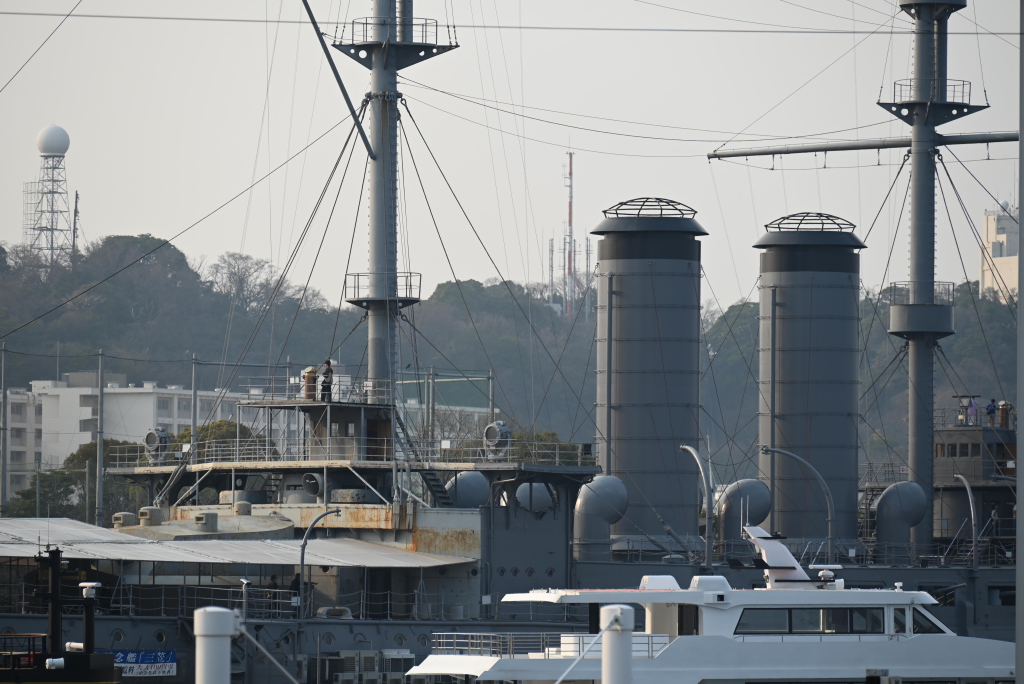
The nearby battleship Mikasa is also visible from the terrace seating. You can find more information about the memorial ship Mikasa here.
HONEY BEE – The Original Navy Burger
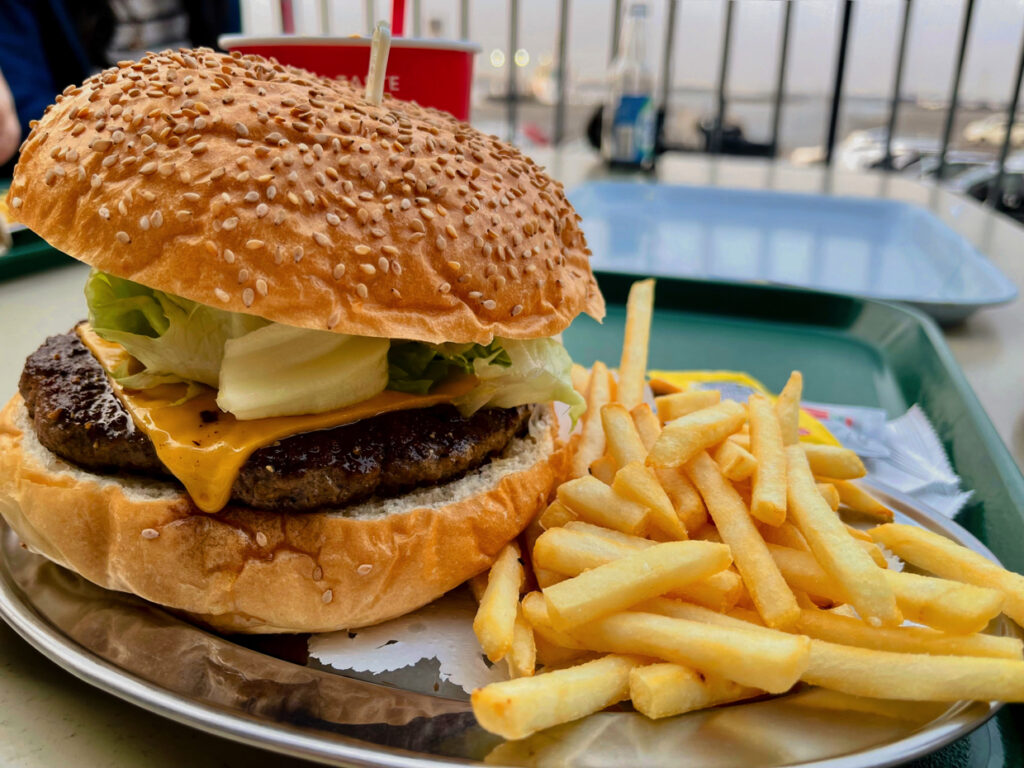
Start with one of Yokosuka’s most famous local dishes: the Navy Burger.
At HONEY BEE, a diner-style burger joint founded in 1968, you’ll find thick, juicy patties grilled to a crisp on the outside, nestled in golden toasted buns.
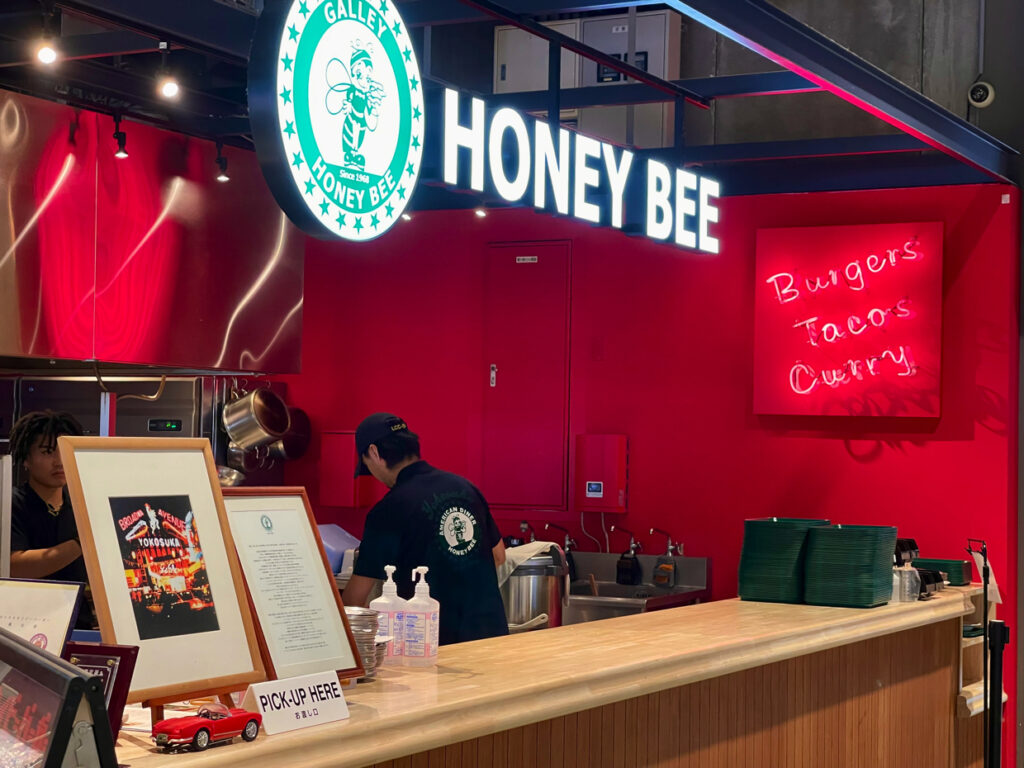
We tried the Regular Navy Burger and the Cheese Navy Burger—both satisfying, nostalgic, and deeply flavorful. With every bite, it felt like stepping into a classic American diner.


🕒 10:00 AM-07:00 PM (L.O.7PM)
🔗 Official Website
Yokosuka Beer TAPROOM – Brewed with Local Water
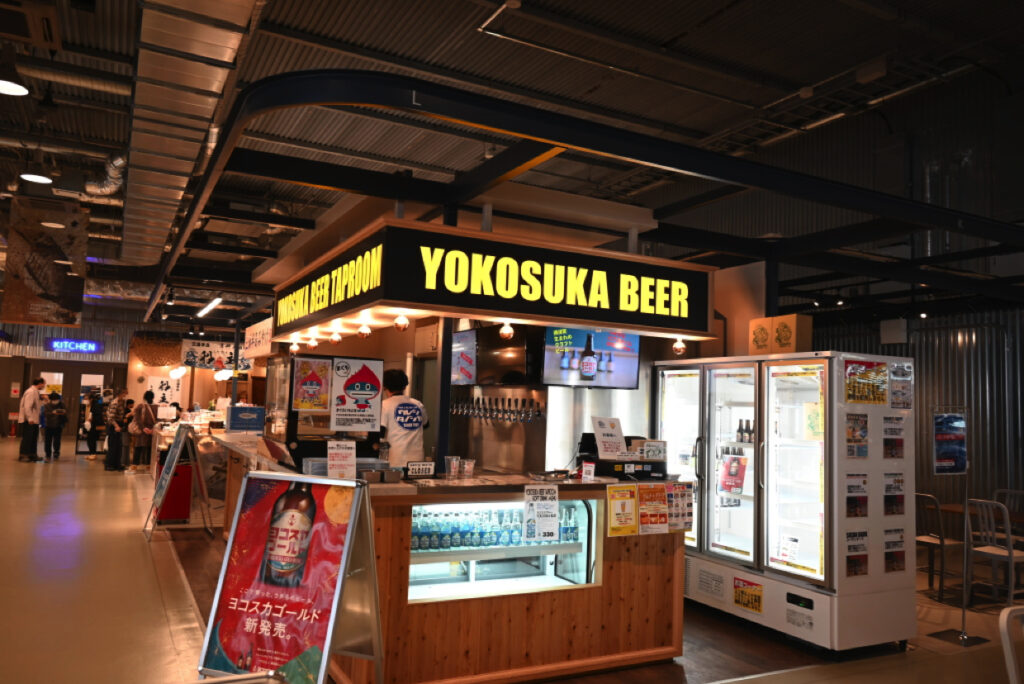
Need a refreshing break? Step into Yokosuka Beer TAPROOM, where 15 taps serve up crisp, creative brews—each one made with spring water from nearby Hashirimizu and a deep love for the local land.
Each pour tells a story of Yokosuka—bright, balanced, and brewed for easy moments by the sea.
Yokosuka Gold – Pure, Crisp, and Local
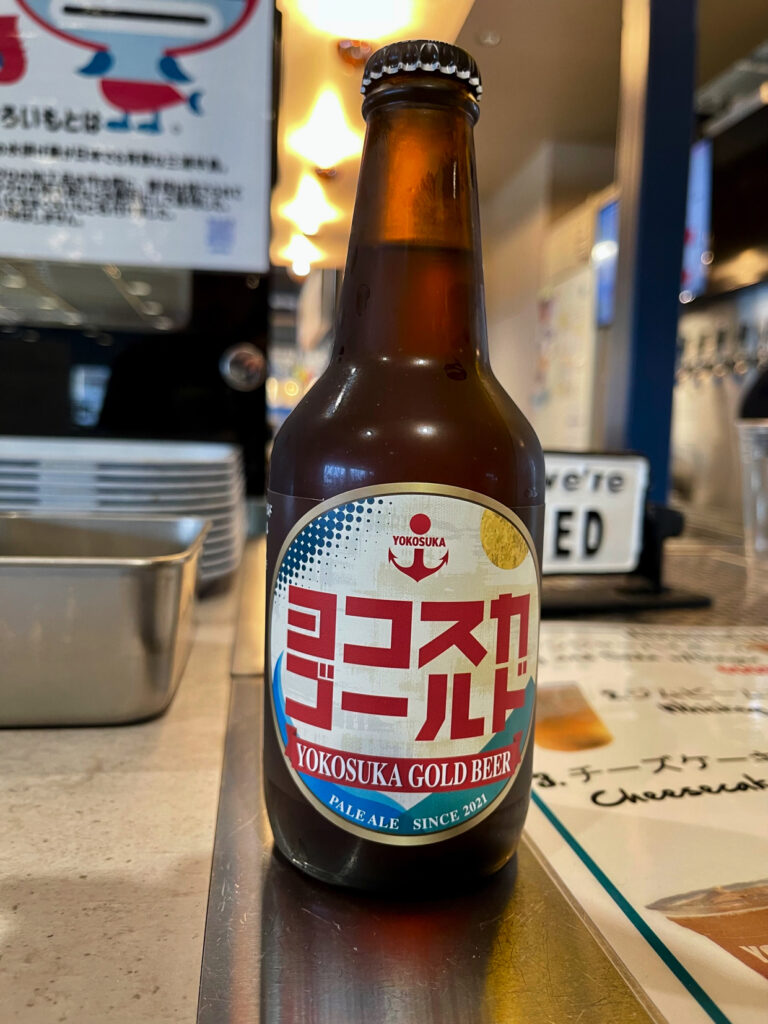
Clean, golden, and refreshingly smooth—Yokosuka Gold is the brewery’s signature pale ale, brewed with natural spring water from nearby Hashirimizu.
Its bright, balanced flavor speaks of the land itself: honest, clear, and deeply satisfying.
Whether you’re a craft beer aficionado or just in for something easy to love, this is the one that keeps you coming back.
Taproom Favorites – Local Brews, Local Vibes

From fruity to wheaty to non-alcoholic, Yokosuka Beer’s taproom offers something for every taste.
Here are just a few local standouts—each brewed with character and a splash of Yokosuka spirit:
Dobuita Happy
A juicy, balanced brew inspired by the lively Dobuita Street culture. Easy-drinking with a soft, fruity twist.
Hasse Mitsumugi Wheat
This award-winning wheat beer is brewed with local wheat and naturally aromatic, with soft banana-like notes from the yeast.
Yokosuka Blue
A refreshing cider-style drink that’s vibrant in color and flavor. With no alcohol and a bold blue hue, it’s fun, fresh, and family-friendly.
Sip, Chill, Repeat
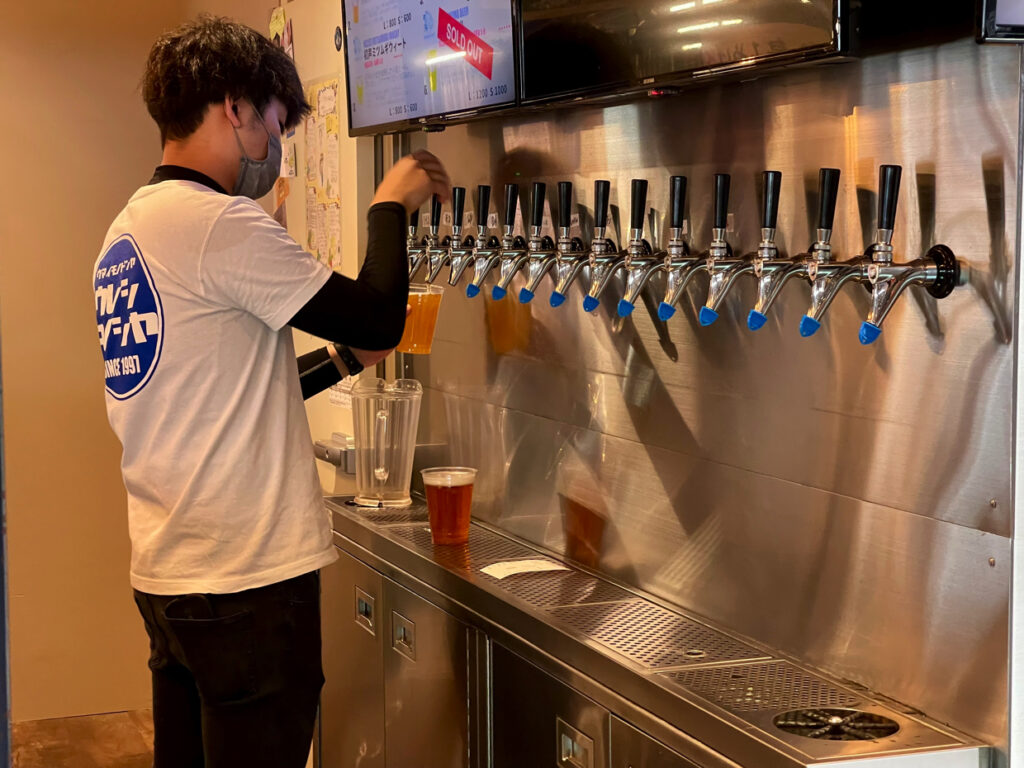
Grab your favorite pour, step out to the terrace, and let the salty breeze and harbor view do the rest.
This isn’t just a drink stop—it’s a moment of Yokosuka you can taste.
🕒 10:00 AM-07:00 PM
🔗 Official Website
BUTCHER’S TABLE – Sausages with Local Flavor
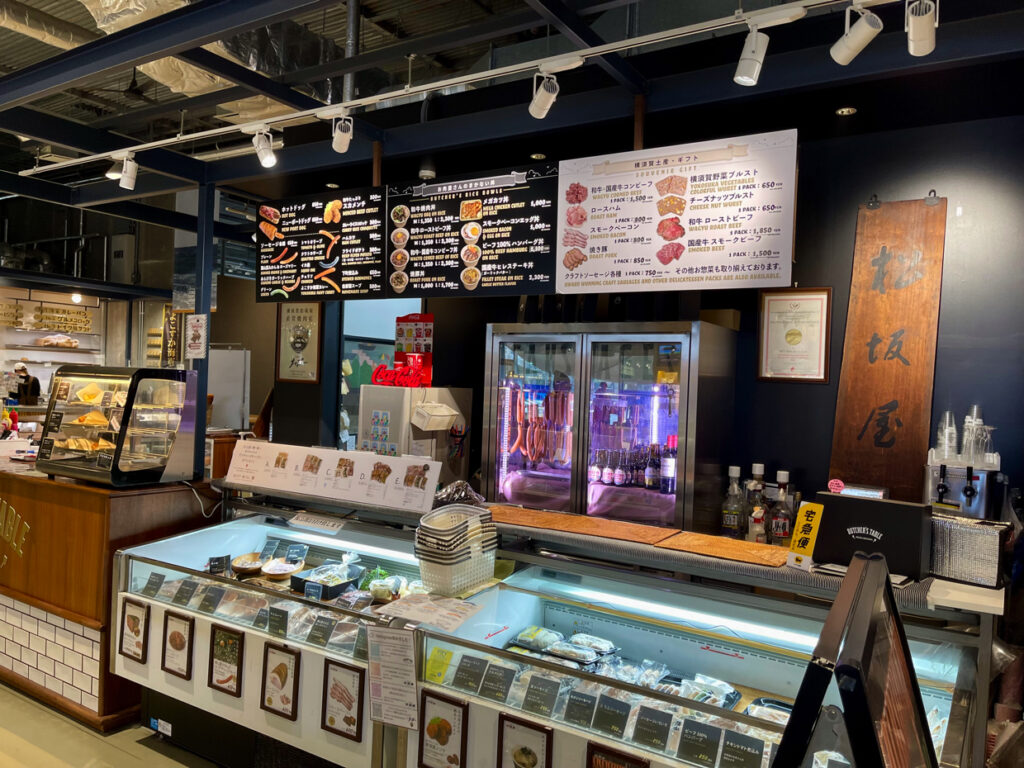

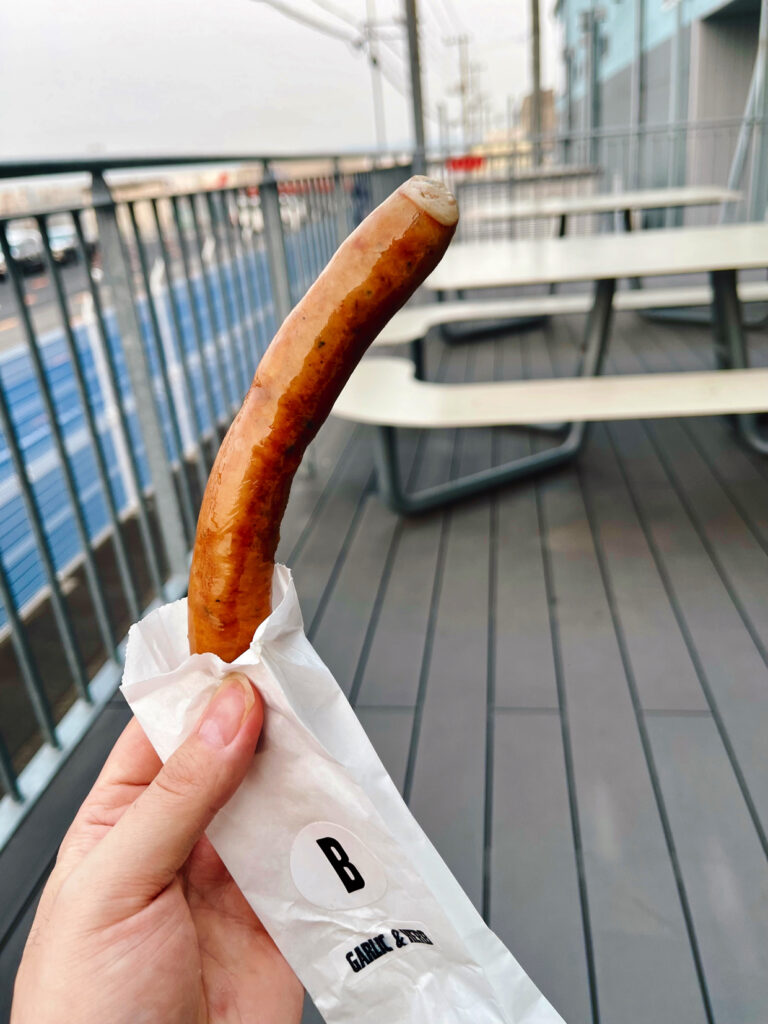
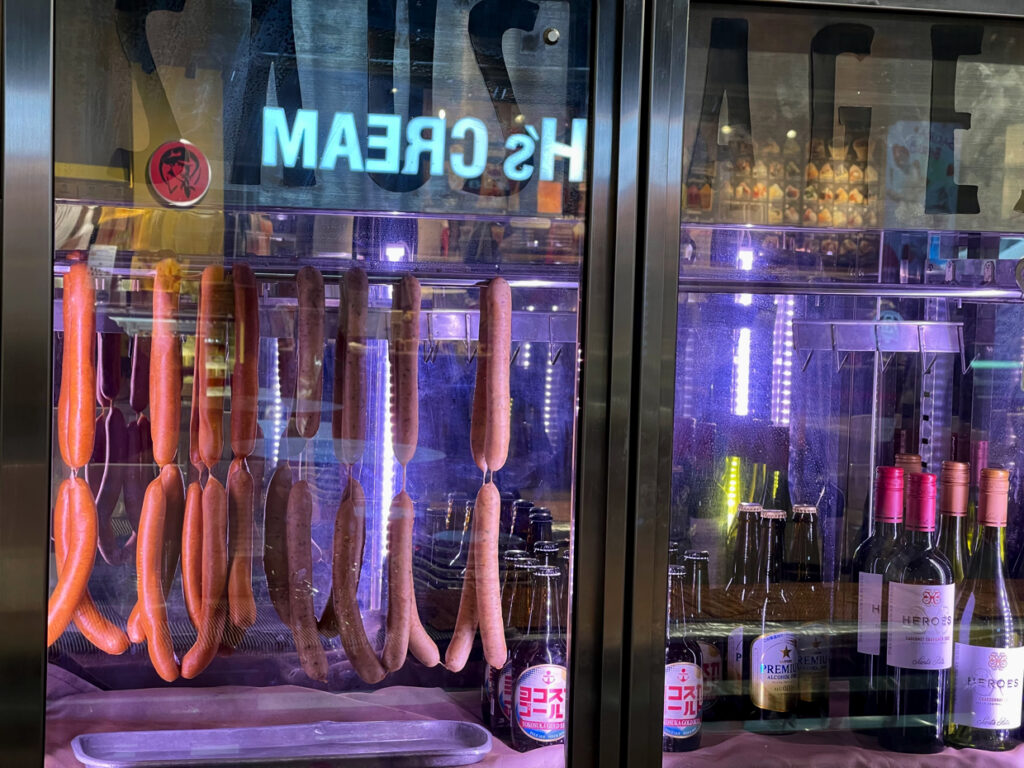
At BUTCHER’S TABLE, operated by Yokosuka’s trusted butcher Matsuzakaya, sausages are crafted the old-fashioned way—by hand, one by one, using premium Japanese pork and absolutely no chemical seasonings.
HAYAMA NATSUMIKAN & ROSEMARY
A refreshing twist featuring locally grown summer orange and rosemary. Light, citrusy, and unforgettable.
COARSELY MINCED PORK, GARLIC & HERB
Bold garlic, fragrant herbs, and juicy, coarsely minced pork come together for a hearty, satisfying bite.
Each sausage is grilled fresh to order, so you can enjoy it piping hot with every juicy snap.
This is comfort food crafted with care—a perfect companion to your cold Yokosuka beer.
🕒 10:00 AM-06:00 PM
🔗 Official Website
YOKOSUKA GELATO FACTORY – Sweet Endings in Spring Colors
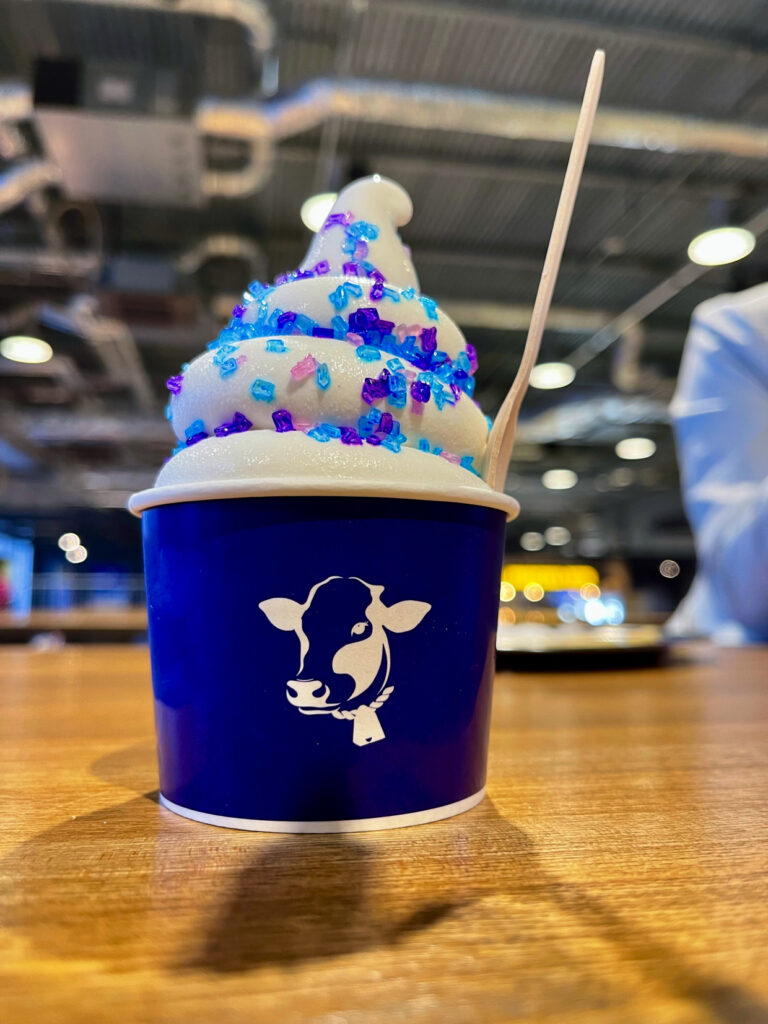

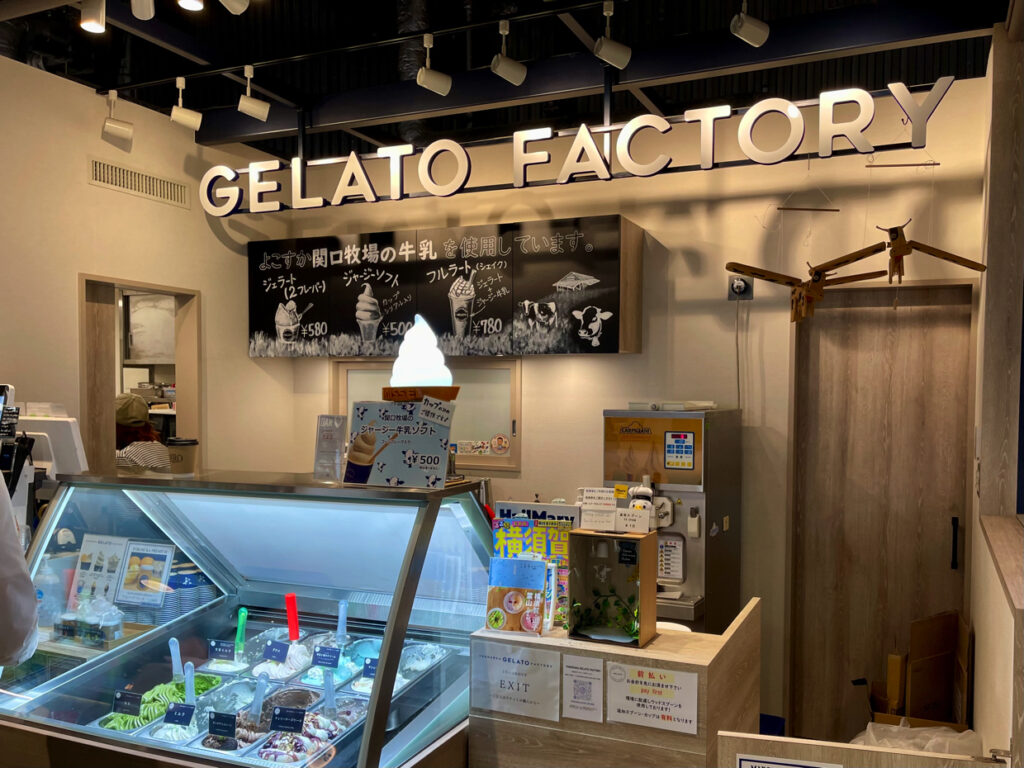

To close the visit, we stopped by Yokosuka Gelato Factory, known for creamy gelato made with local Sekiguchi Farm milk.
We chose two flavors: Cherry Cheesecake, inspired by U.S. Navy recipes and sakura blossoms, and Blue Sky & Cream, a refreshing orange-flavored gelato that’s as photogenic as it is tasty.
For a unique treat, don’t miss the Beach Glass Soft Serve—a milky soft-serve sprinkled with crystal sugar, made to sparkle like Yokosuka’s seaside shores.
🕒 10:00 AM-06:00 PM
🔗 Official Website
Access Information: Getting to and Around Yokosuka
● Getting to Yokosuka
By Train:
From Tokyo Station, take the JR Yokosuka Line (approx. 1 hr 20 min) to Yokosuka or Kurihama Station.
Alternatively, take the Keikyu Line from Shinagawa to YRP Nobi, Kitakurihama, or Horinouchi stations for more localized access.
By Car:
From central Tokyo, Yokosuka is about 60–90 minutes via the Yokohama-Yokosuka Road.
Note that weekends and sakura season can bring heavy traffic, so early departures are recommended.
● Getting Around
This itinerary is designed with rental car travel in mind.
Many sakura spots are spread out and not easily accessible via public transport. Major rental companies such as Toyota and Nissan have branches near Yokosuka-Chuo and Kurihama Stations.
If you prefer not to drive, a combination of train, walking, and taxis is also possible, though some flexibility in your route may be needed.
● Map and Navigation
Use Google Maps on your smartphone to navigate between locations.
Searching by name (e.g., “Manshoji Temple,” “Shomyoji Temple,” “Togakuji Temple”) will give accurate directions, and checking for parking availability in advance is highly recommended.
You May Come for the Sakura, But You’ll Return for Yokosuka

A day spent among cherry blossoms, quiet temples, and local flavors offers a richness that goes beyond what any photo can capture.
In Yokosuka, spring reveals stories hidden in the everyday—soft moments that linger long after the shutter clicks.
And as the seasons change, you may find yourself drawn back here, camera in hand, ready to discover it all over again.



